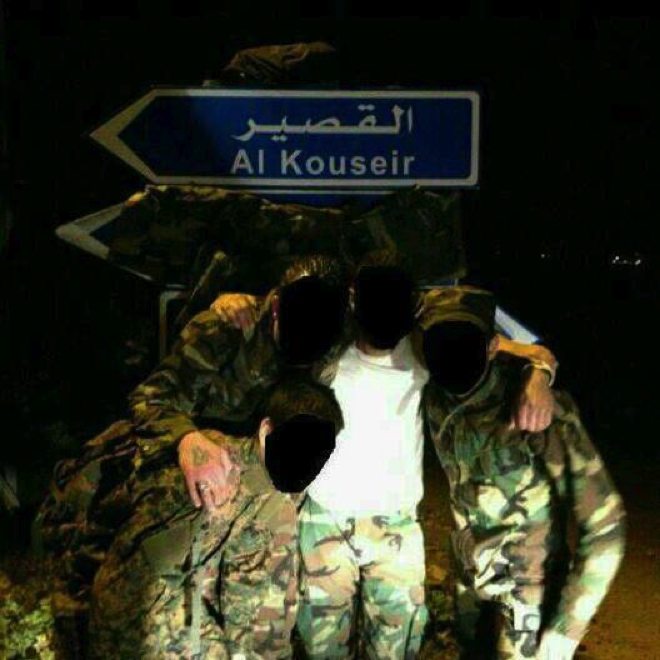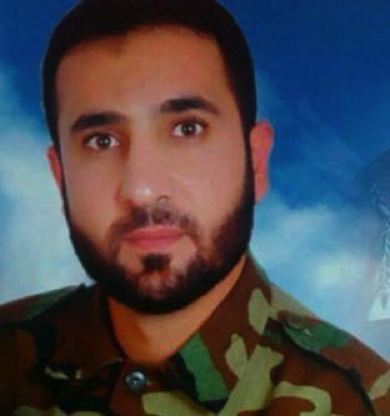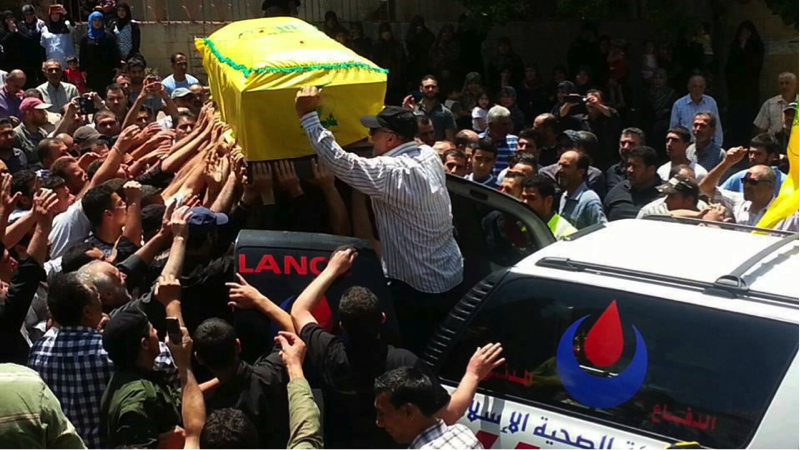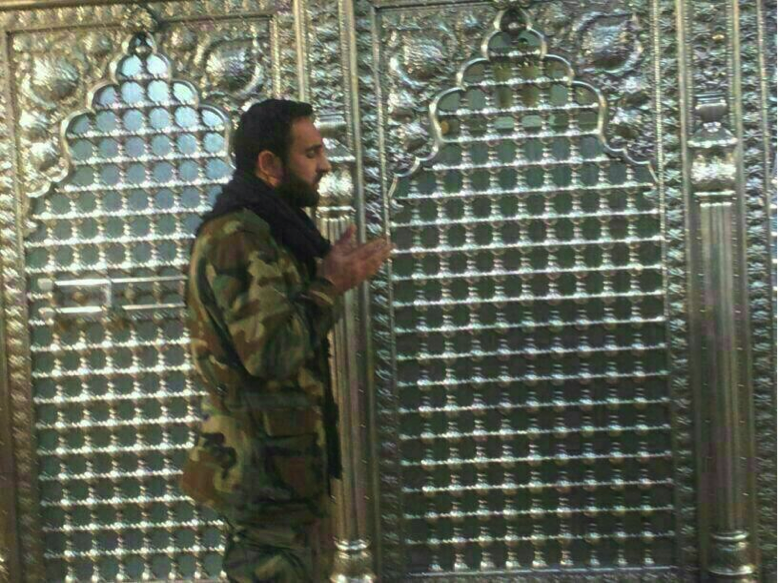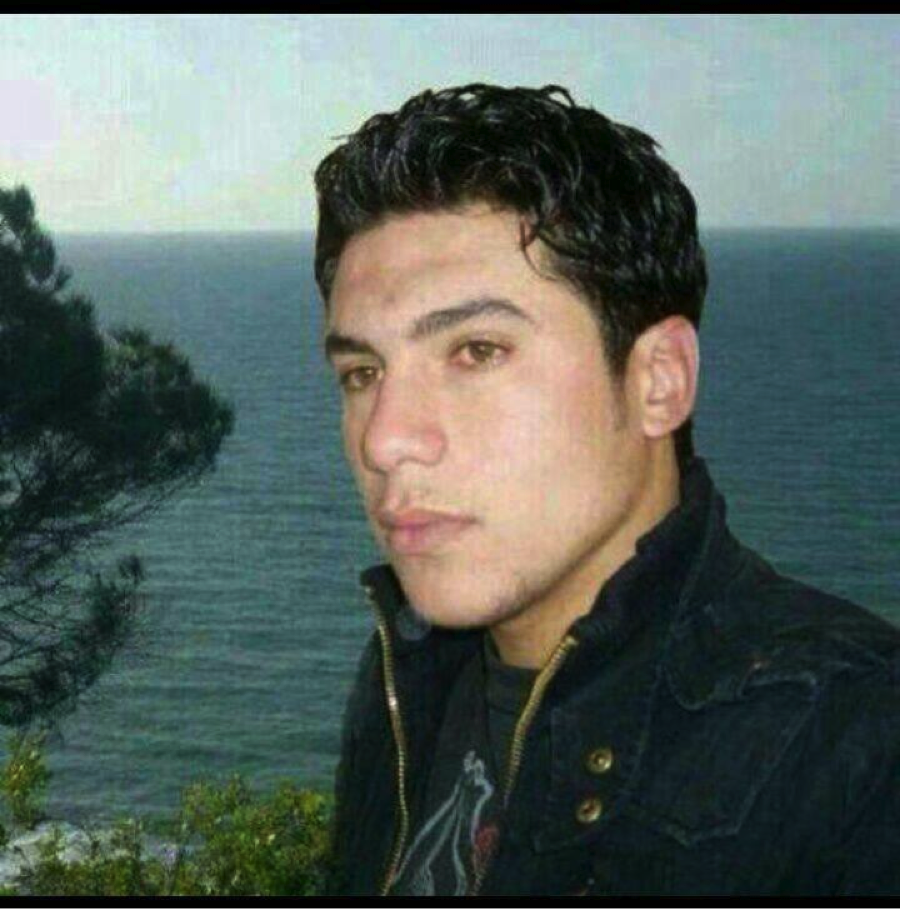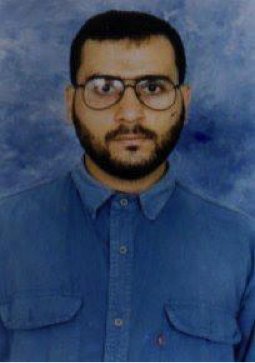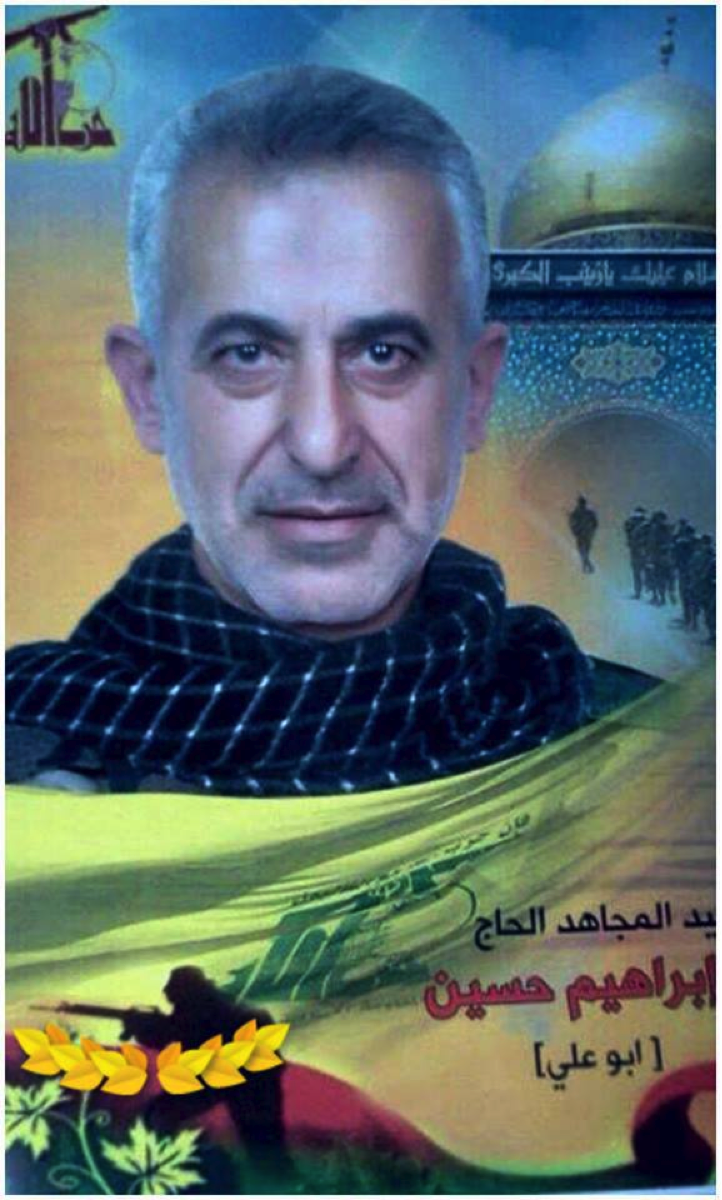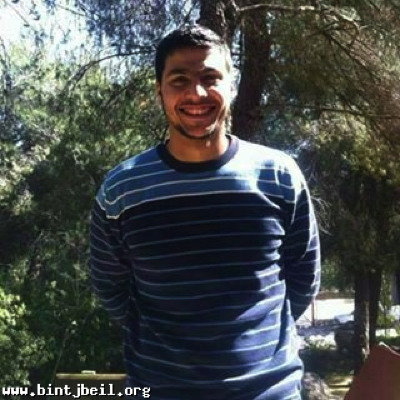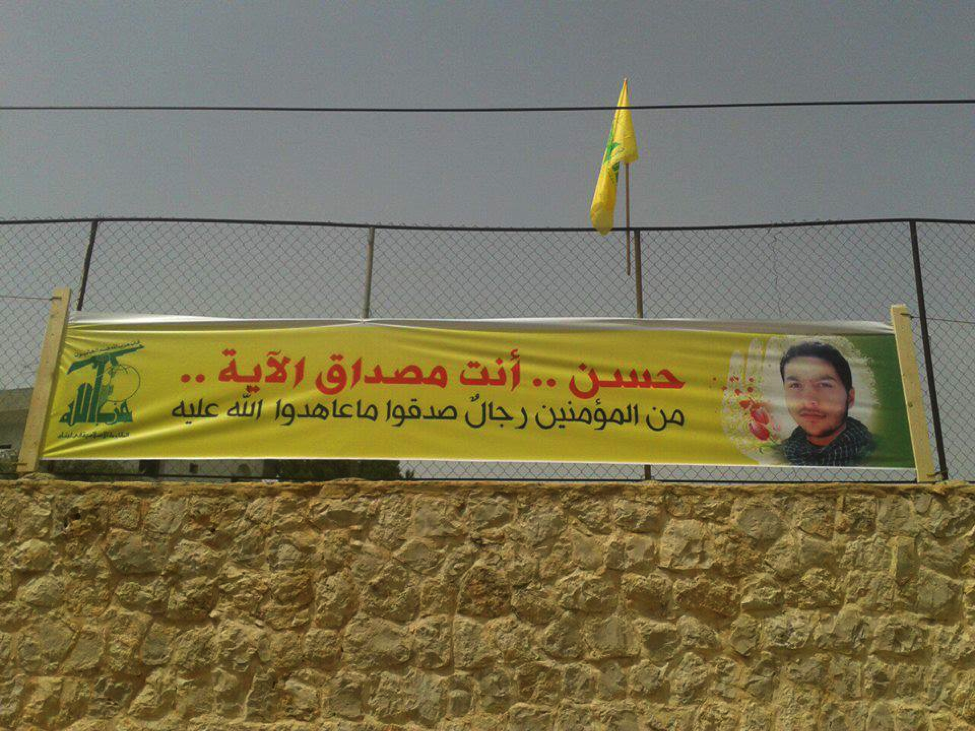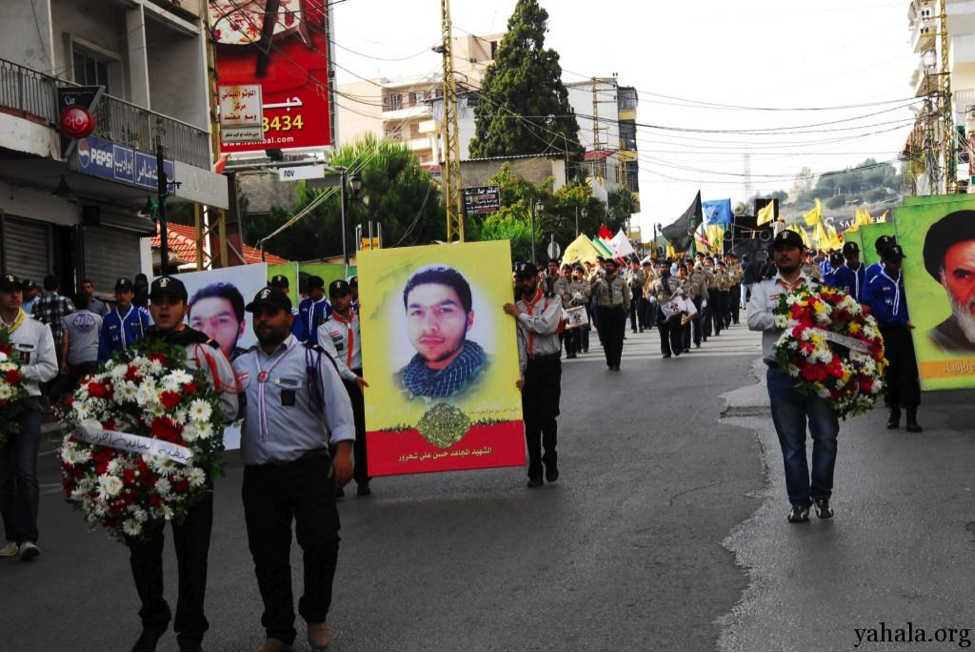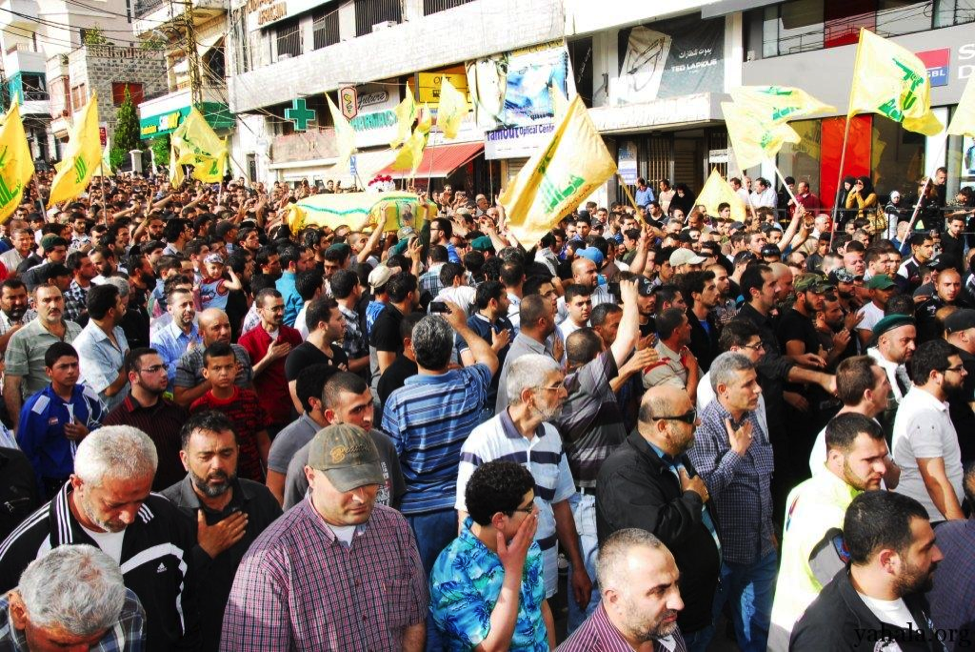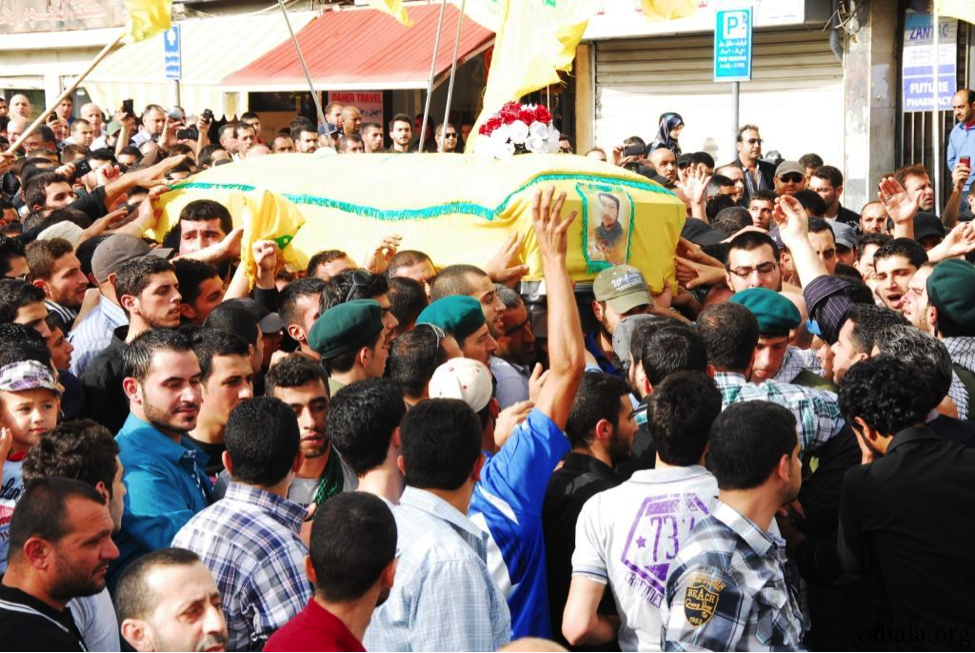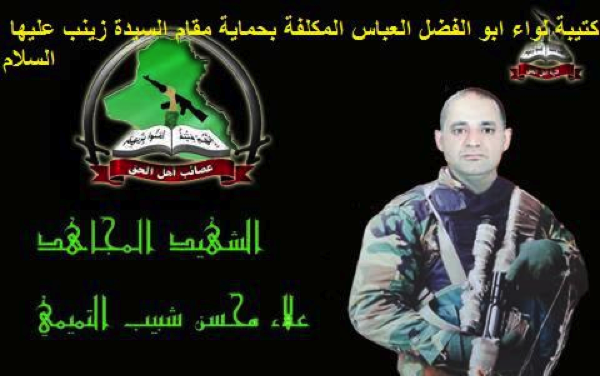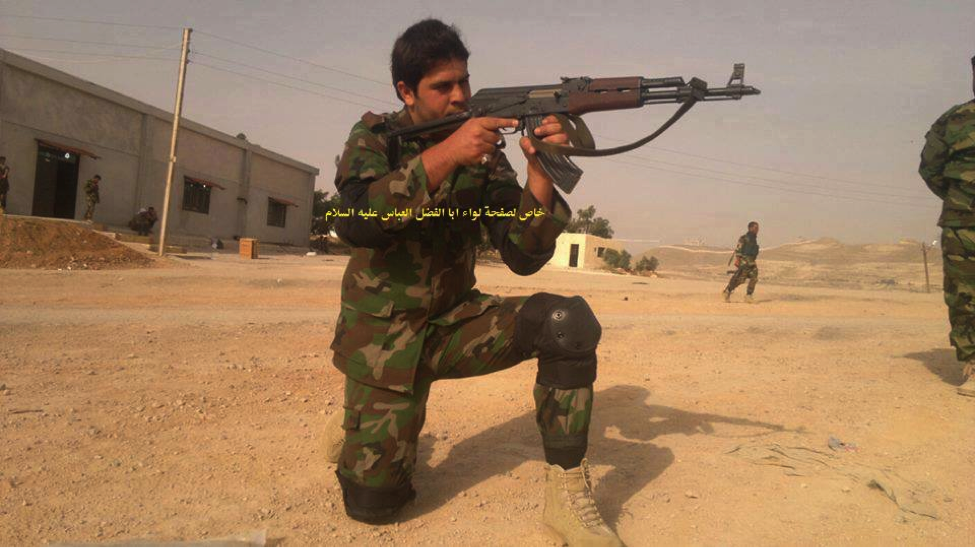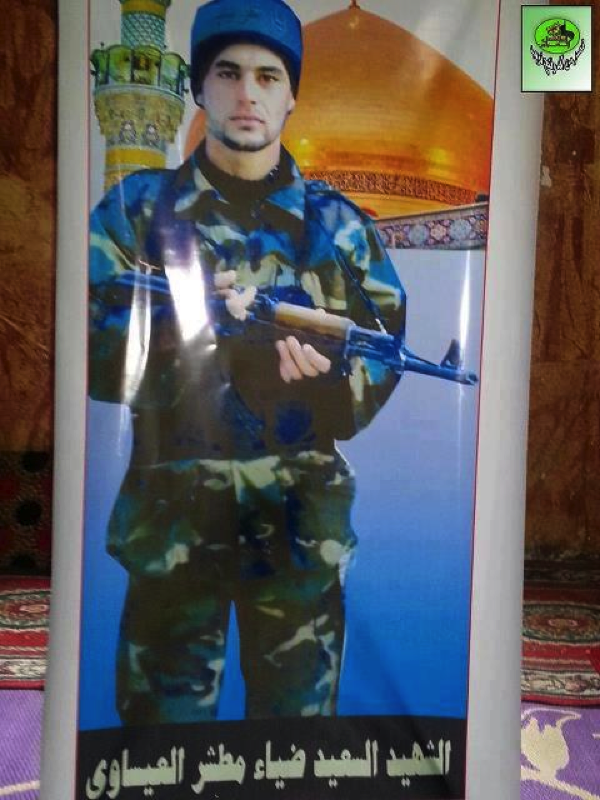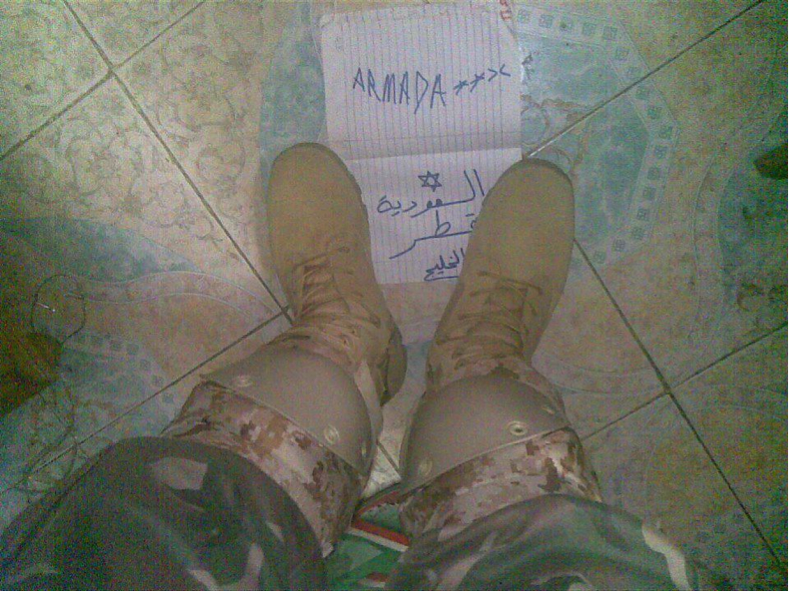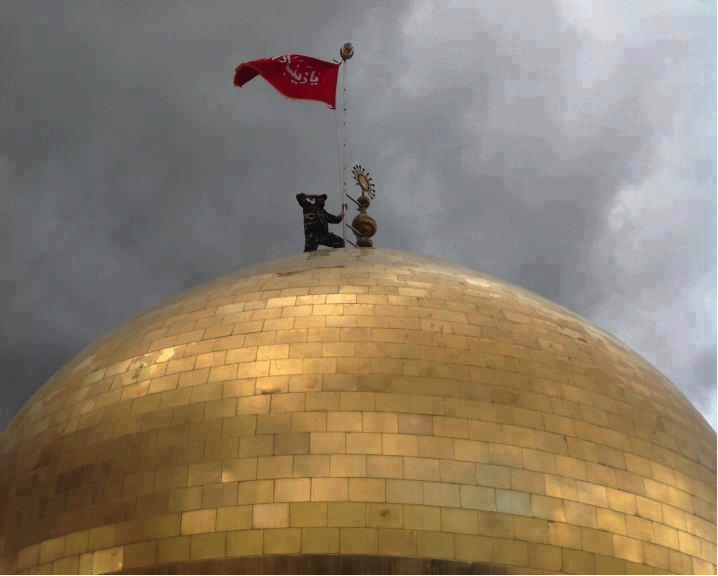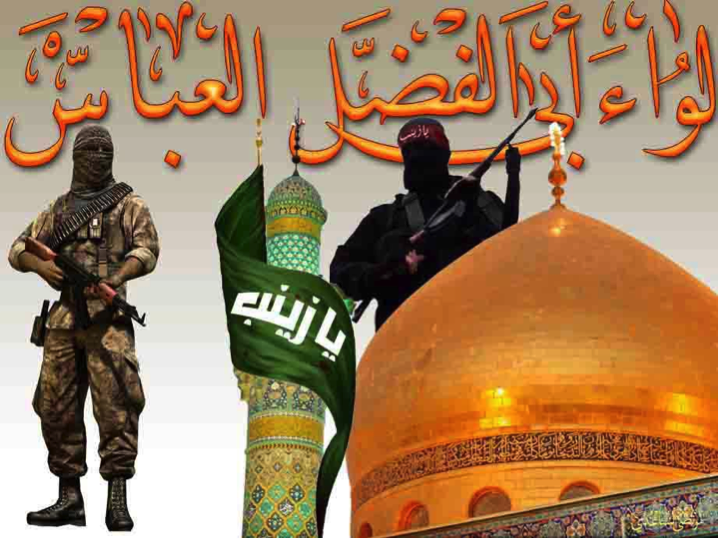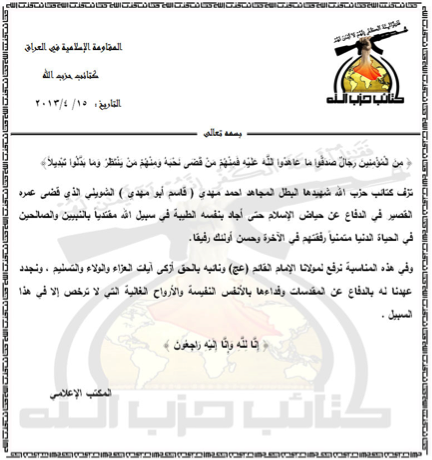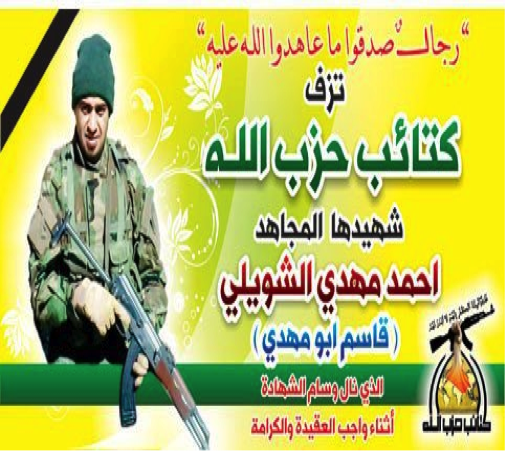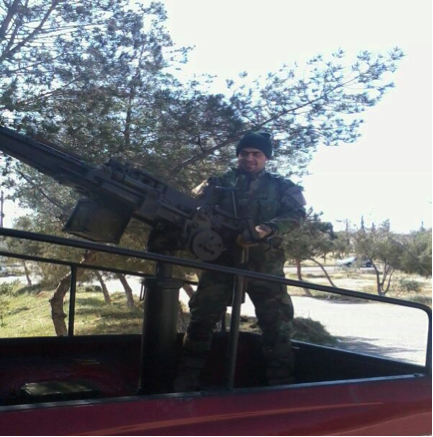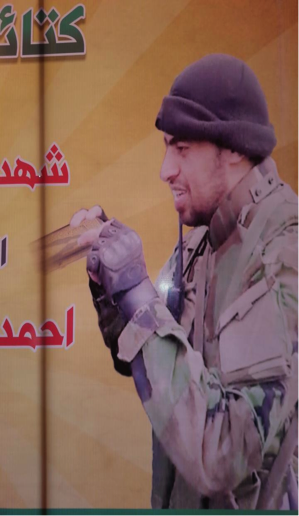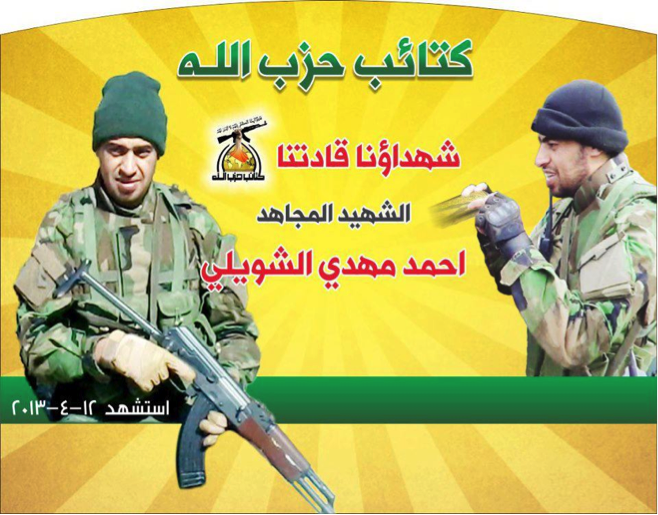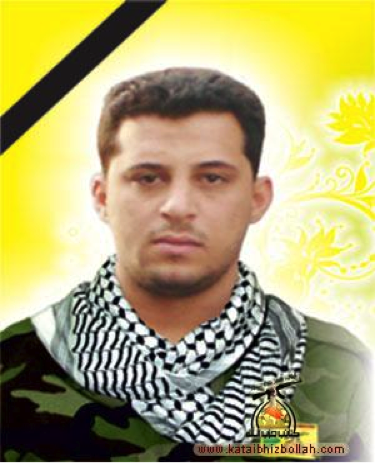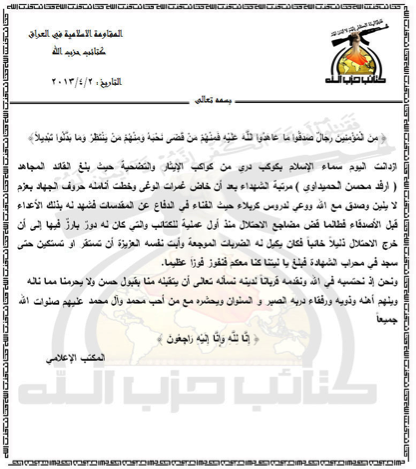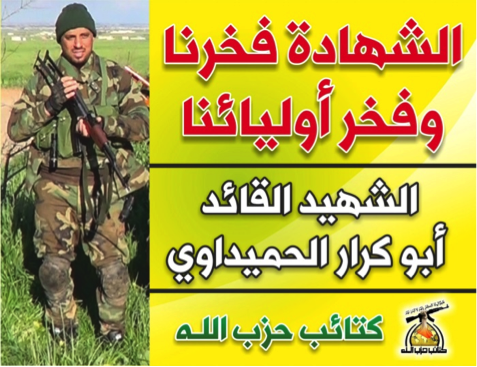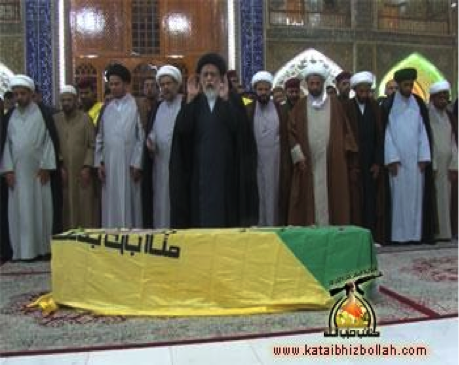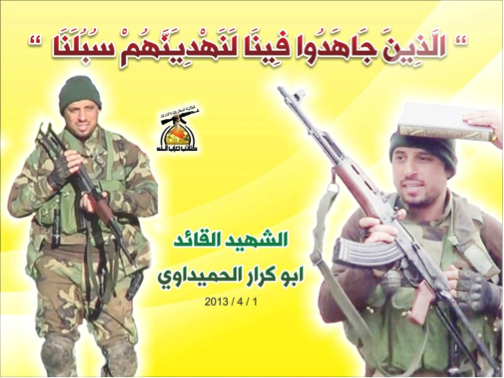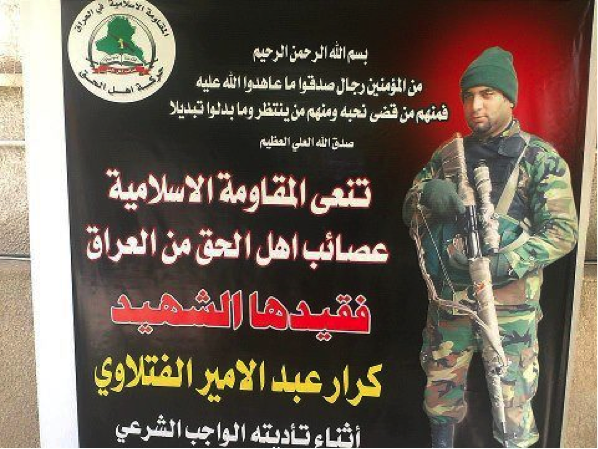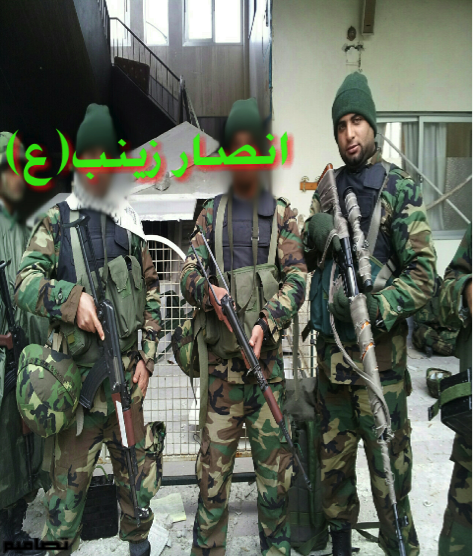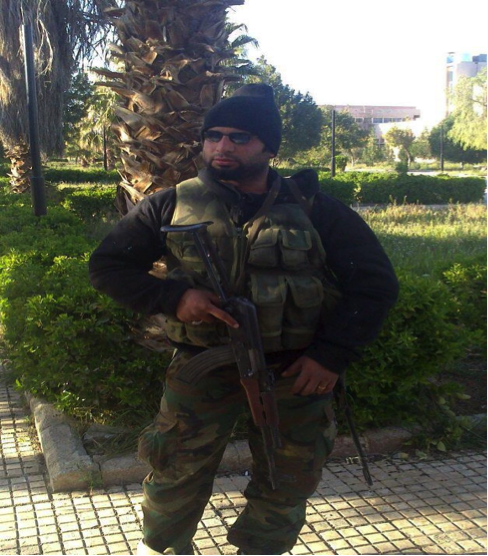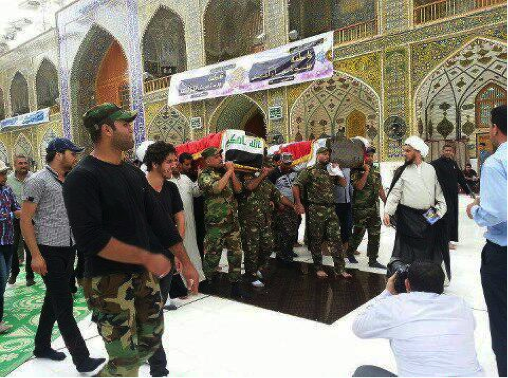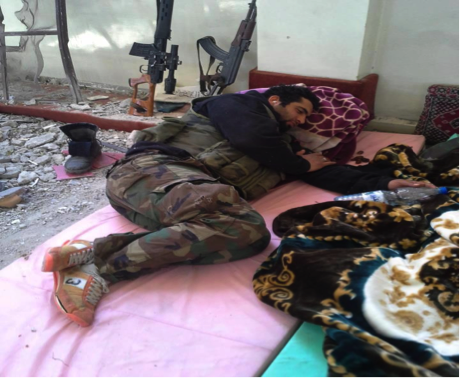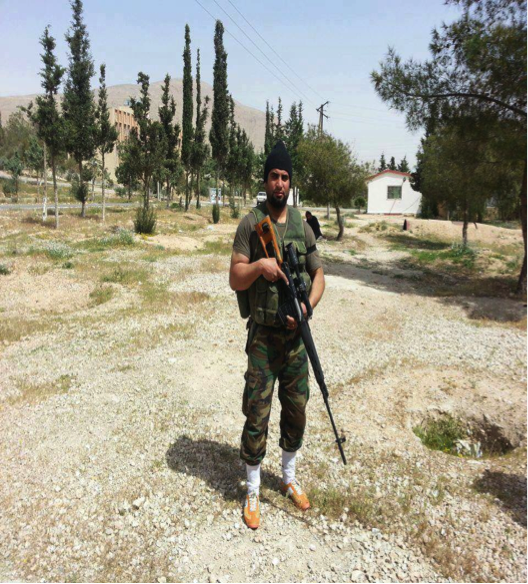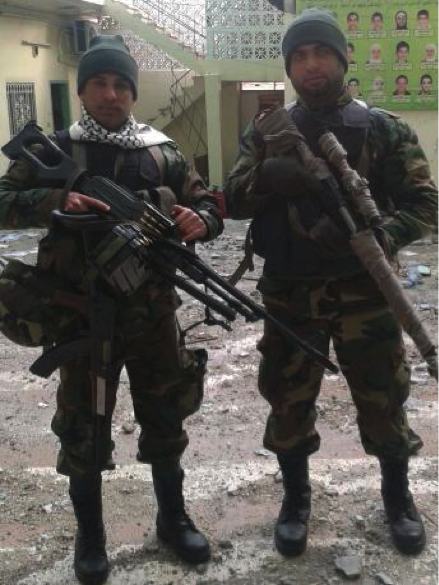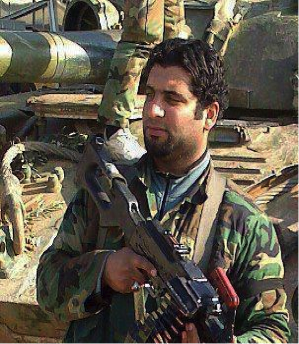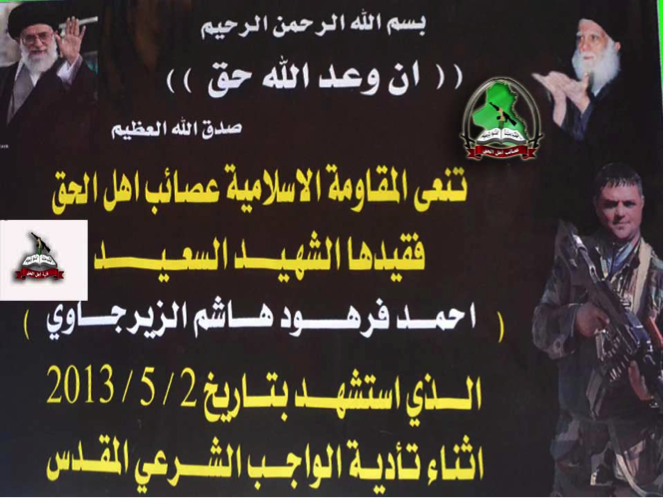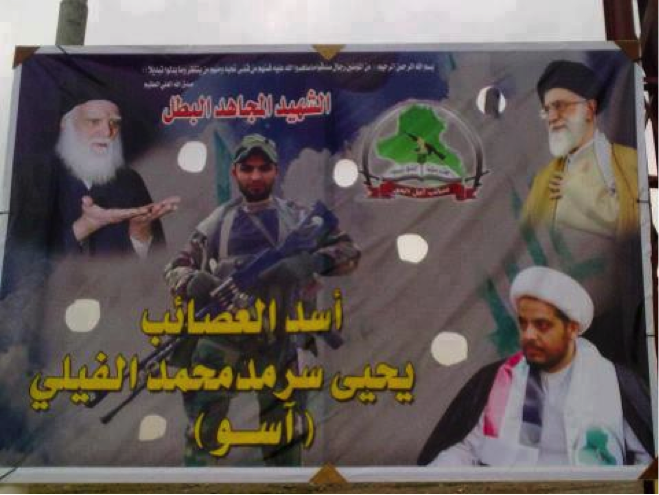NOTE: For prior parts in the Hizballah Cavalcade series you can view an archive of it all here.
—
The Qusayr Meat Grinder: Hizballah’s Dead From May 20-May 25, 2013
By Phillip Smyth
Click here for a PDF version of this post
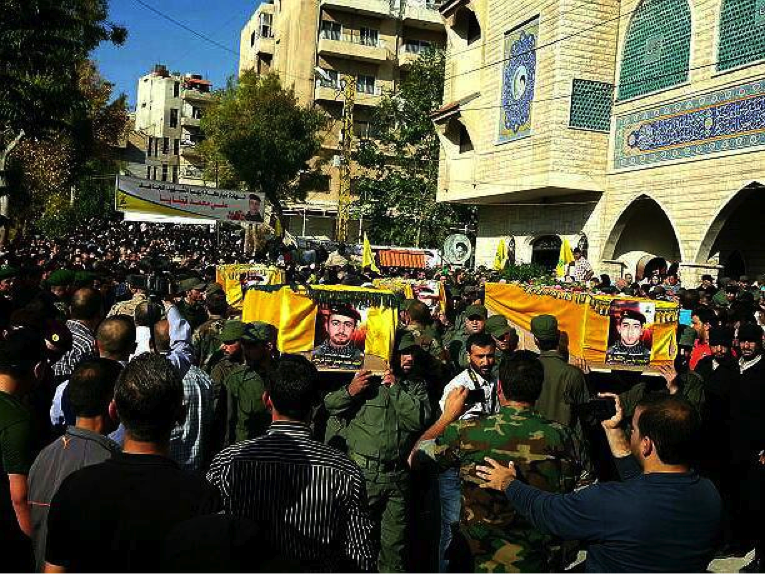
Figure 1: Four Hizballah dead are buried in the Bekka Valley city of Ba’albek on May 21, 2013.
The five day period from May 20-25th saw a massive rise in the number of Hizballah funerals which occurred across Lebanon. There were also group funerals. One occurred in the Bekka city of Ba’albek and is shown below.
An undeniable trend, which has also become much more widespread, is the insistence that every dead Hizballah member was a “Defender” of Damascus’s Sayda Zaynab Shrine. During earlier announcements and funerals, the Zaynab Shrine and it’s protection were invoked quite regularly, but this shift demonstrates a more full acceptance of the narrative that all Hizballah members who are dying in Syria are “Protecting the Lady Zaynab”. On Facebook, albums holding the pictures of Hizballah’s dead from Syria have been entitled, “The Campaign to Defend Saydah Zaynab’s Shrine” to “Zaynab’s Defenders”. The narrative disregards whether these fighters were serving in the countryside near Qusayr, Damascus, or elsewhere within Syria. Instead, the main theme is that all actions executed in Syria are done to protect the Zaynab Shrine. Of course, this promotes more sectarian aspects of the war in Syria and with Hizballah’s involvement.
The listed Hizballah members were all confirmed by checking close to 30 pro-Hizballah and official Hizballah forums, Facebook pages, and websites.
__
Name: Muhammed Yasir Sabalani
Death Announced: May 21, 2013
Notes: Sabalani was buried in a group funeral which included three other Hizballah members.
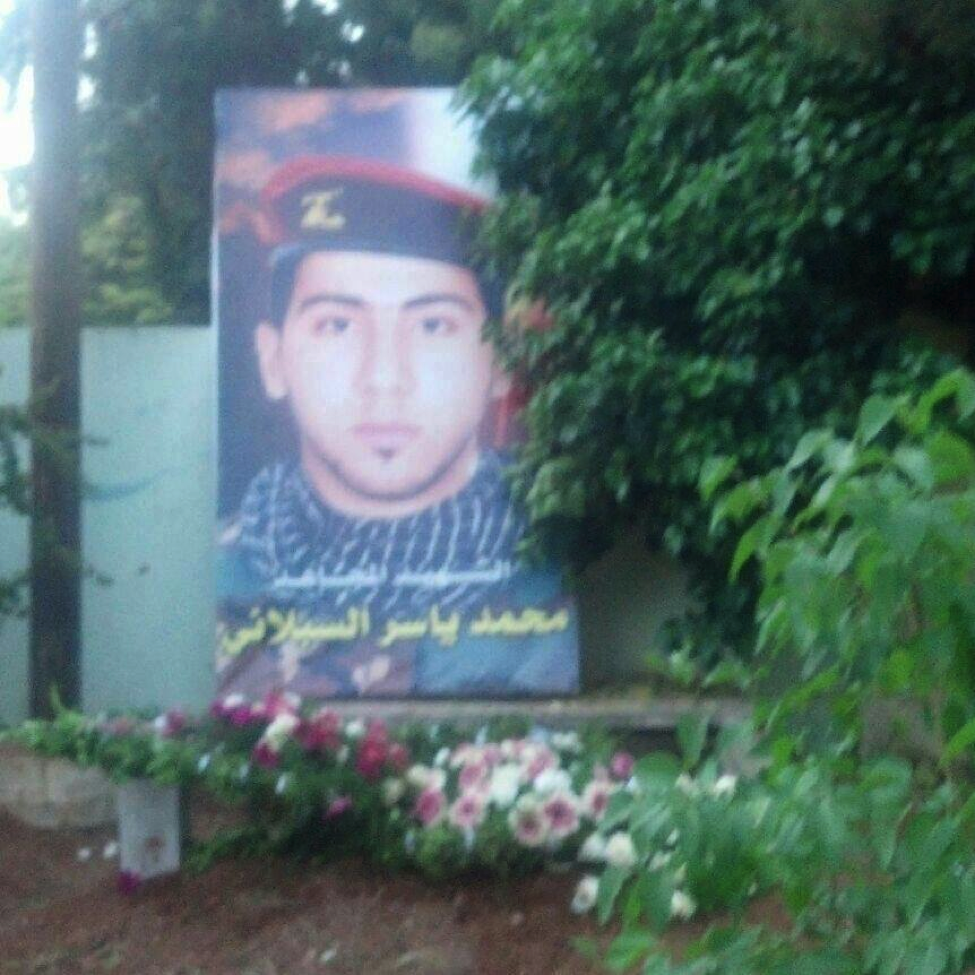
Name: Muhammed Qataya.
Death Announced: May 21, 2013. Funeral was also held on May 21, 2013.
Notes: Qataya’s was part of a group funeral, which included three other dead Hizballah members.

Name: Muhammed Mahdi Ahmed Murtada
Death Announced: May 21, 2013. Funeral was also held on May 21, 2013.
Notes: Murtada was part of a group funeral, which included four other dead Hizballah members.
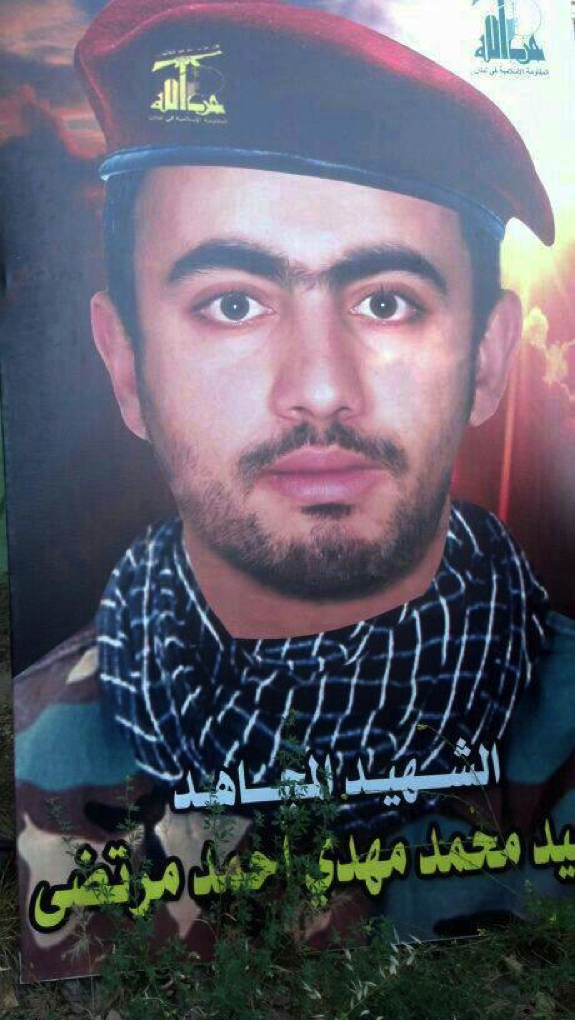
Name: Al-Haj Ahmed Wael Ra’ad
Death Announced: May 21, 2013. Funeral was held on May 21, 2013
Notes: Ra’adwas part of a group funeral, which included four other dead Hizballah members.
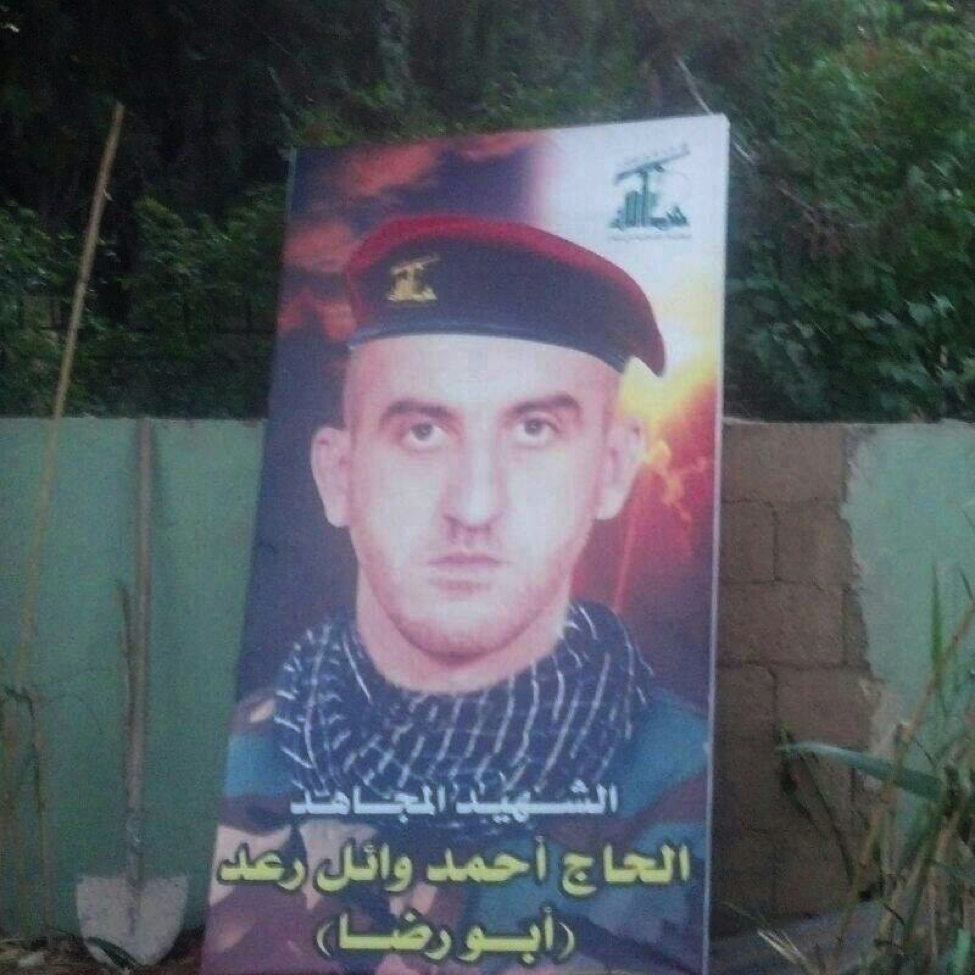
___
Photos of the Ba’albek Group Funeral
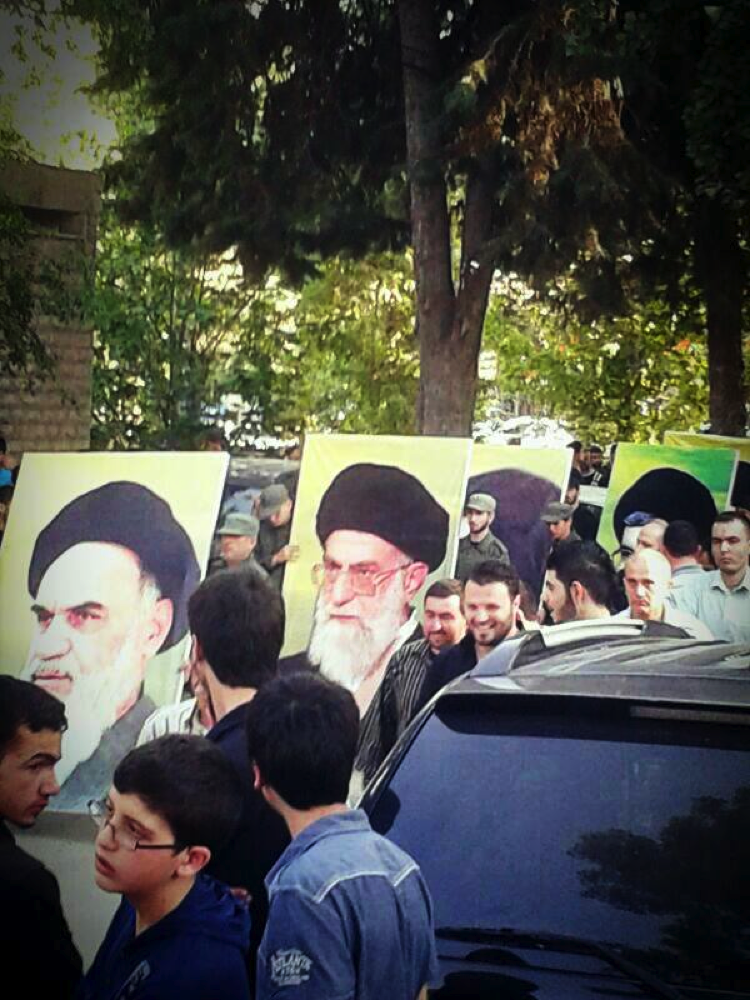
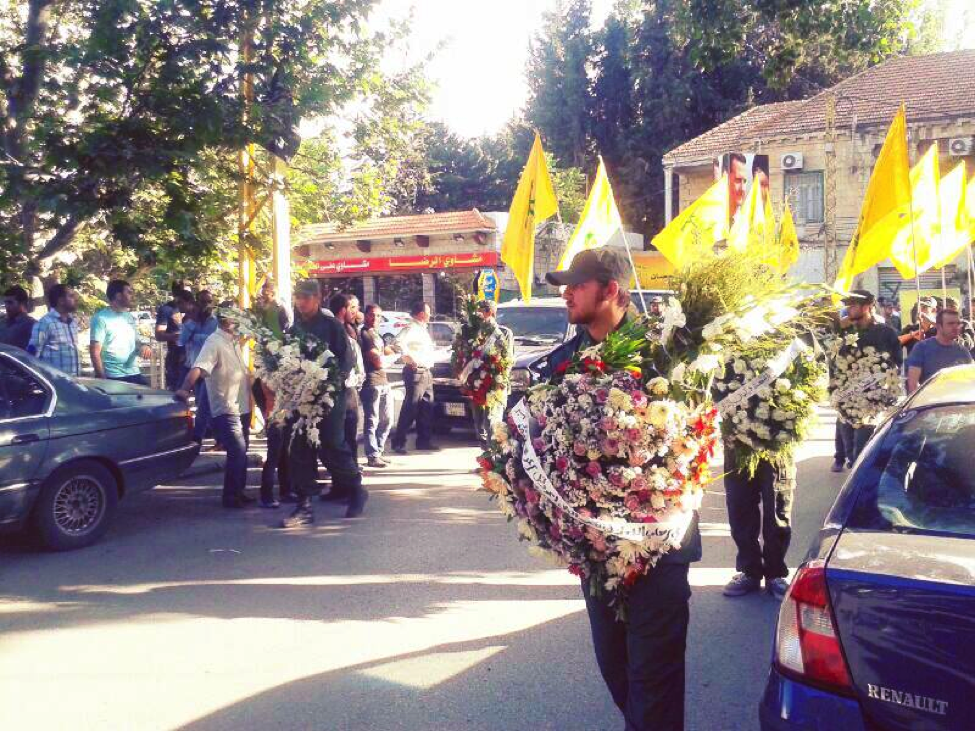
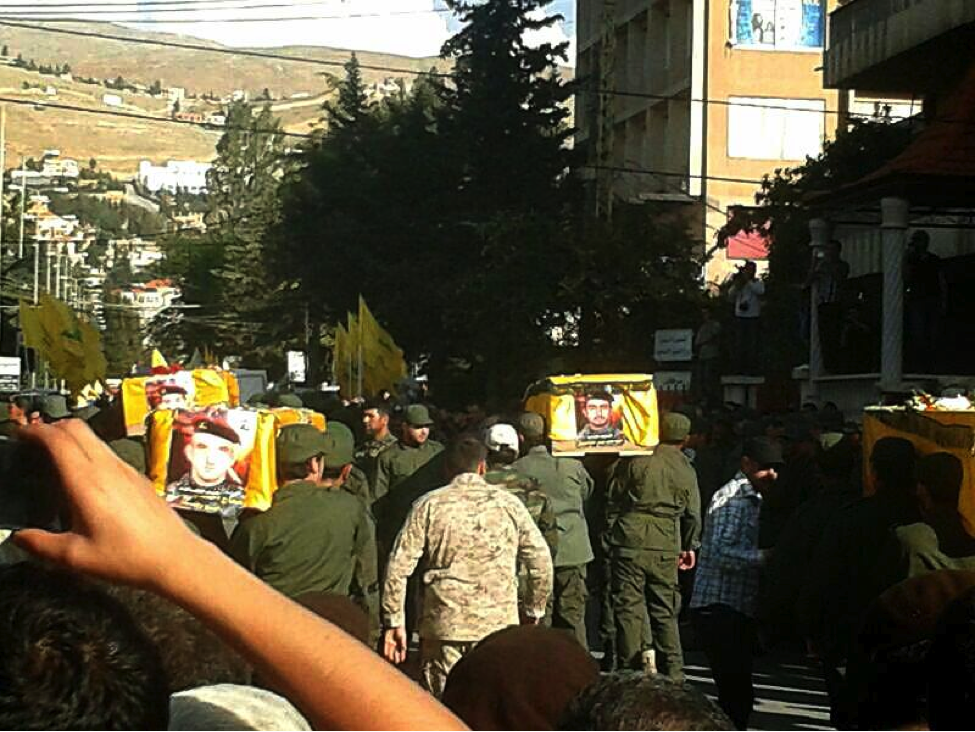
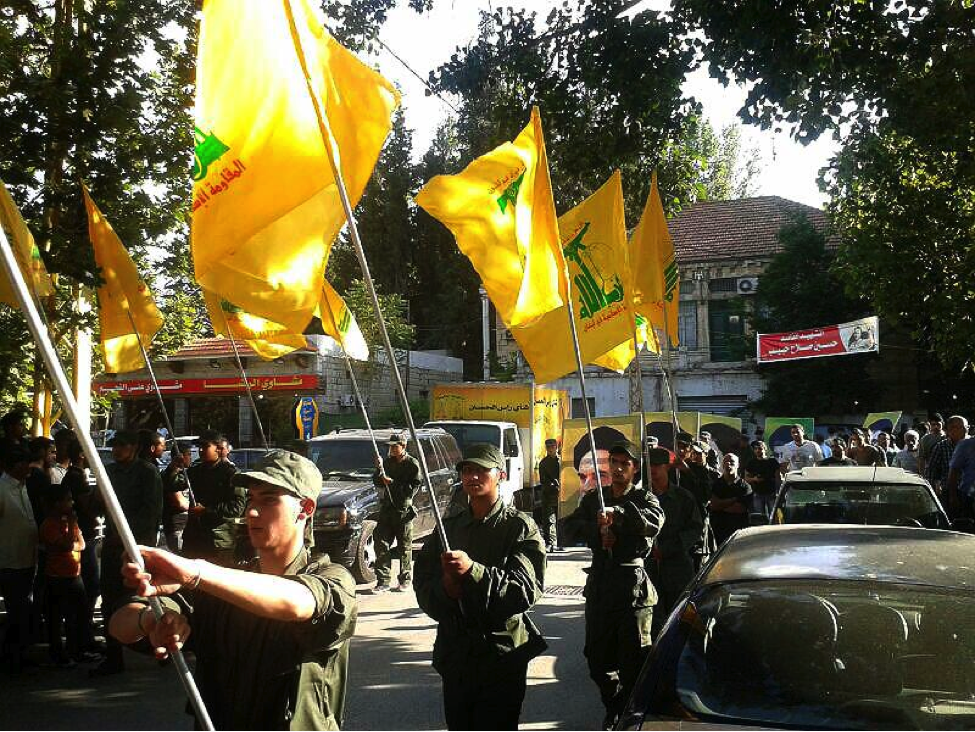
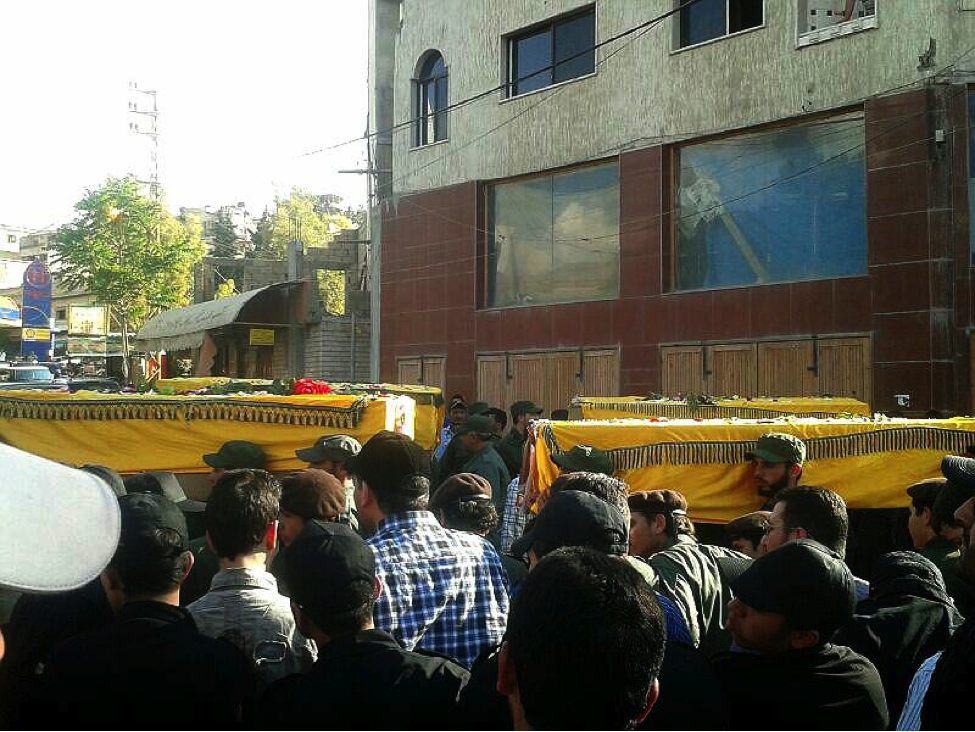

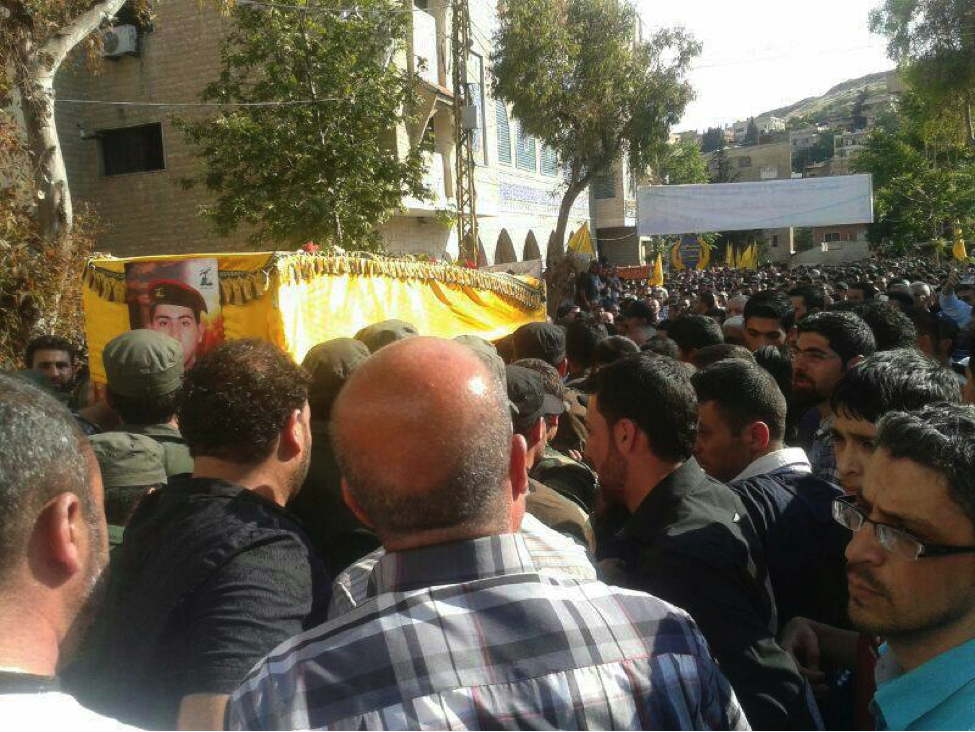
__
Name: Ali ‘Abbas Daheni (Abu Ghaleb)
Death Announced: May 20, 2013.
Notes: Daheni’s death was first announced on three pro-Hizballah Facebook pages.
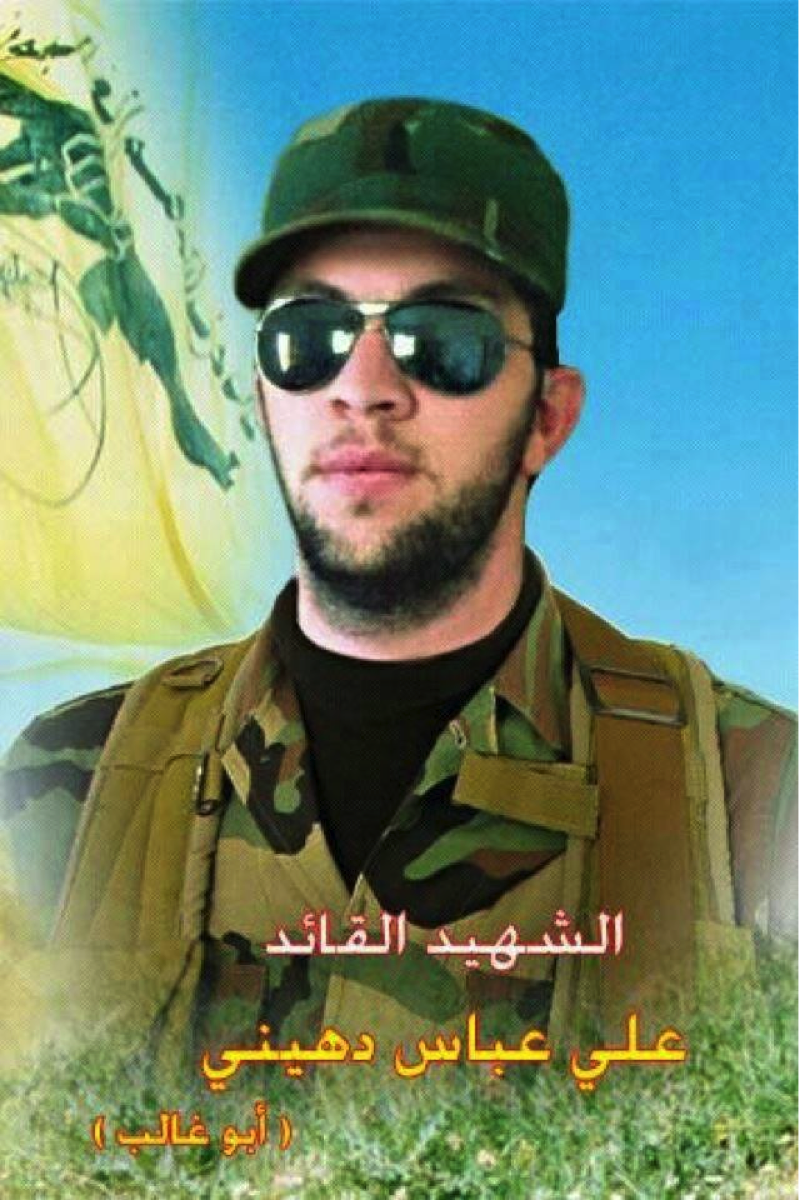

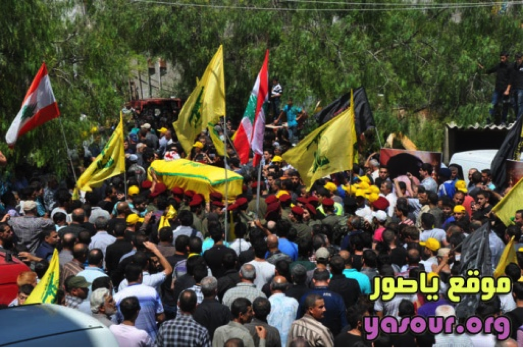

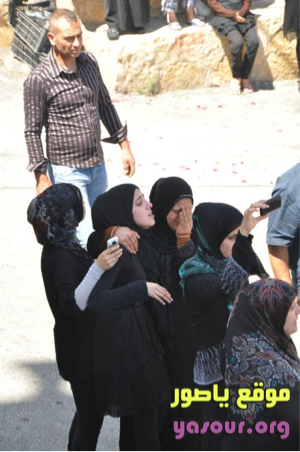
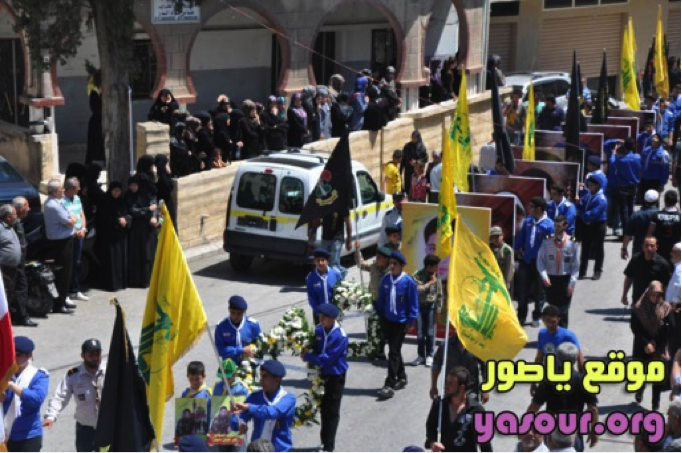
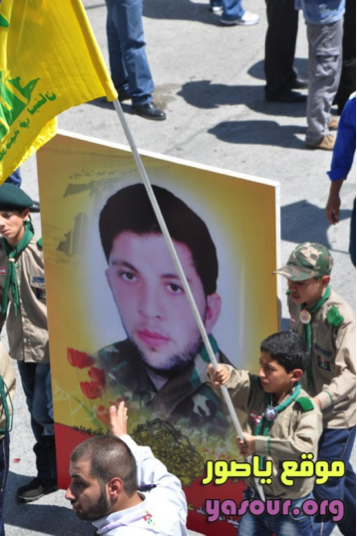
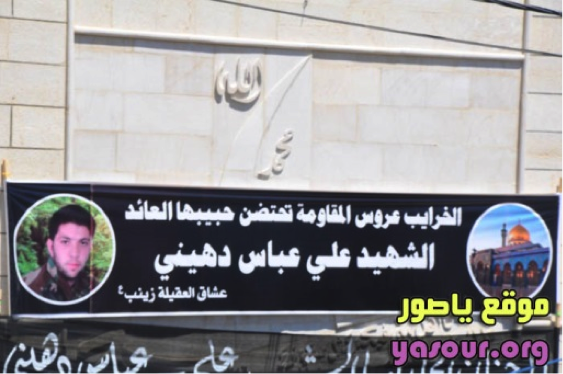
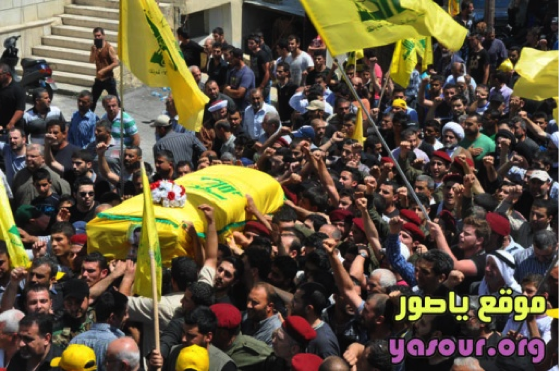
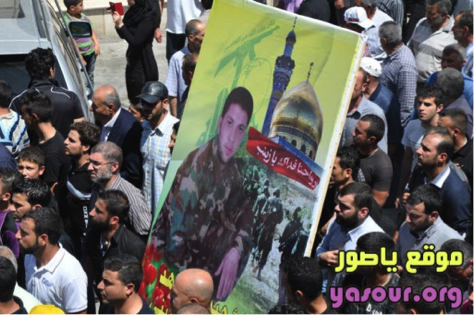

Name: Husayn Ahmed Abu al-Hassan (Al-Sayyid Abu Zaynab)
Death Announced: May 20, 2013. Funeral was held on May 21, 2013.
Notes: First announcement of Hassan’s death came via Facebook and then BintJbeil.org.
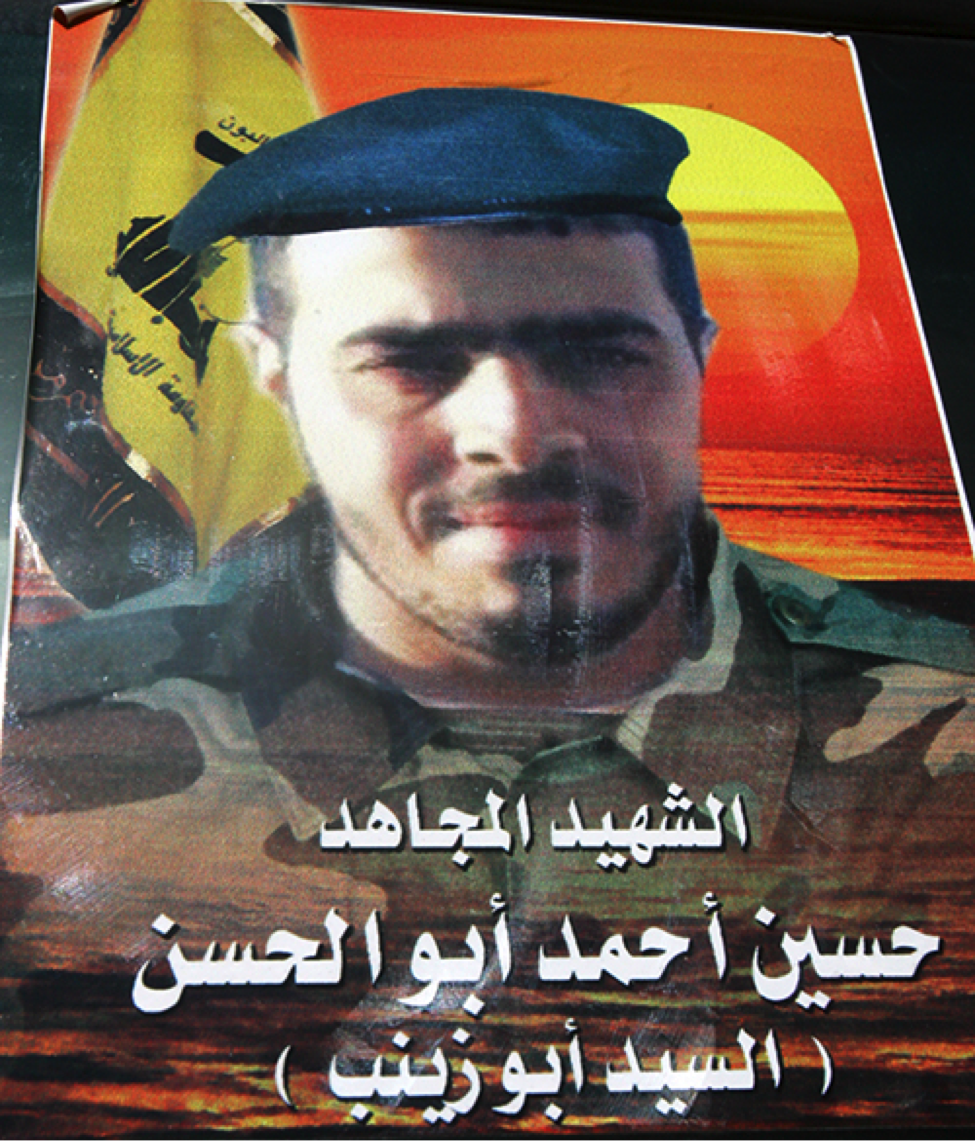
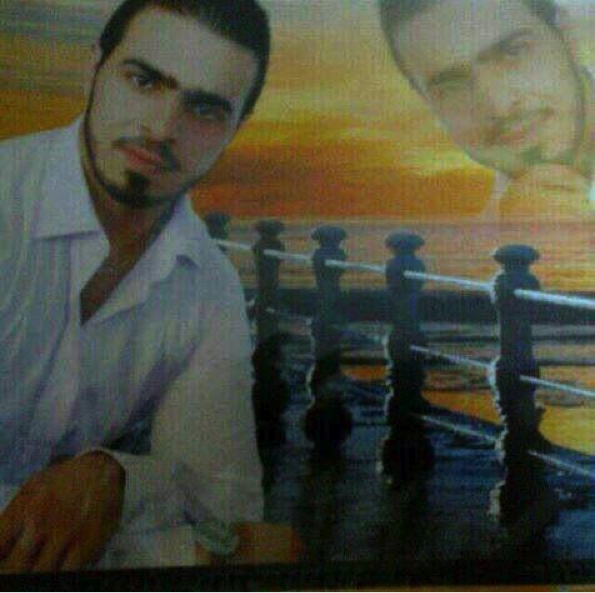

Name: Muhammed Hassan al-Shahadi
Death Announced: May 20, 2013. Funeral was held on May 23, 2013.
Notes: Yasour.org and BintJbeil.org reported that Shahadi was killed “Defending the holy shrines in Syria” and that those attending his funeral chanted “Labayka ya Zaynab” (“We are here for you, O Zaynab”). The first photo of al-Shahadi which was uploaded showed him with a beard. His martyrdom poster showed him clean-shaven.
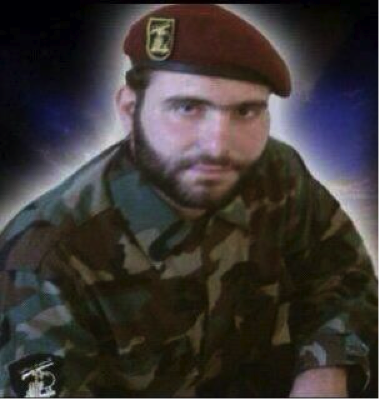
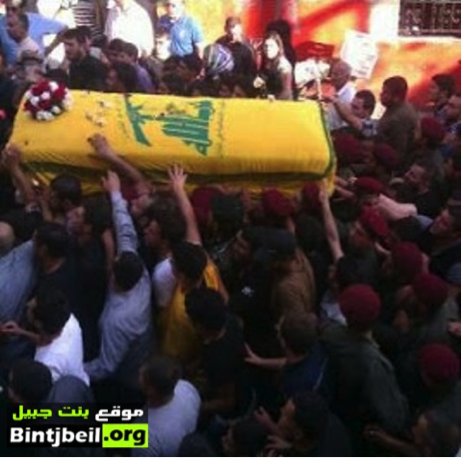
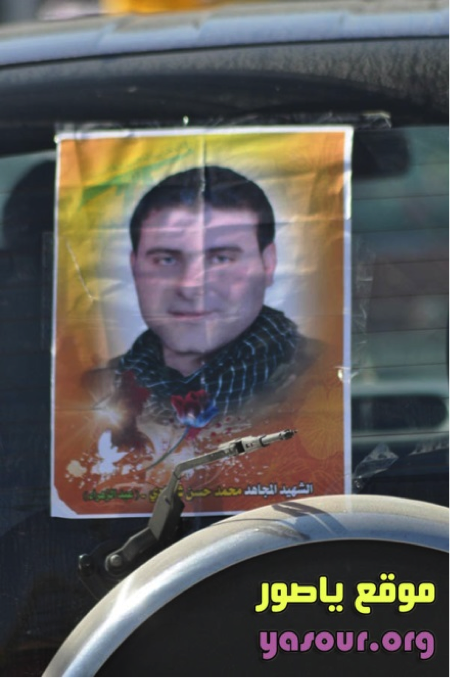
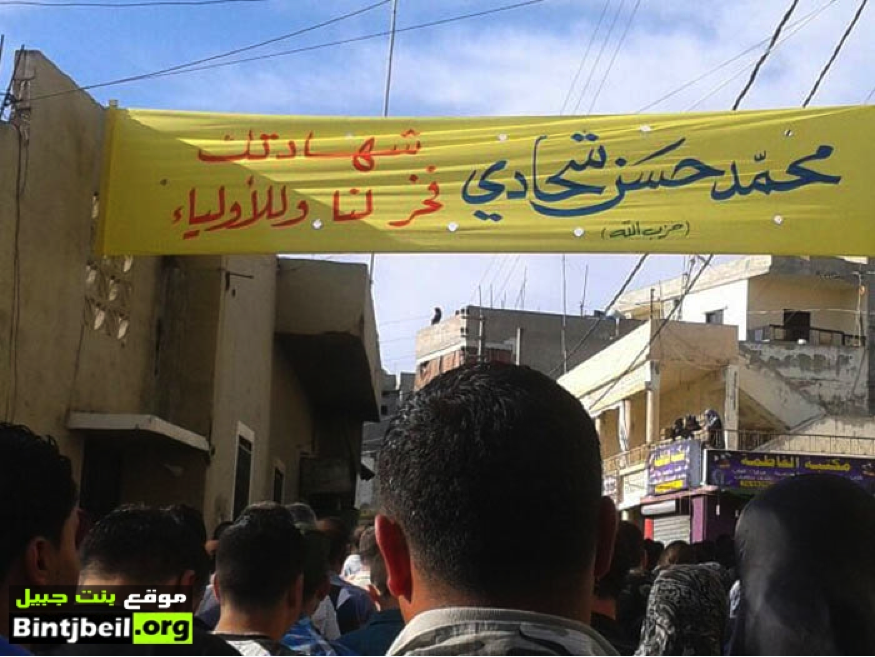
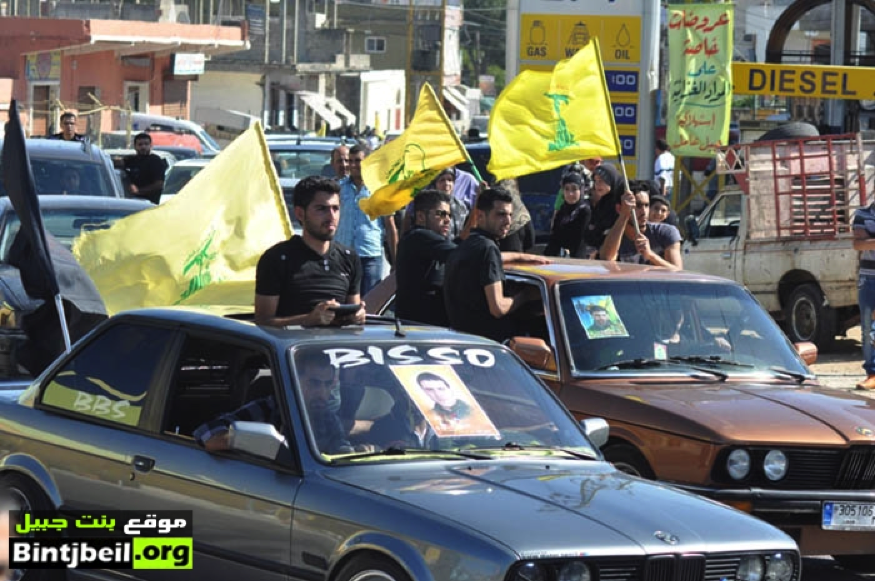
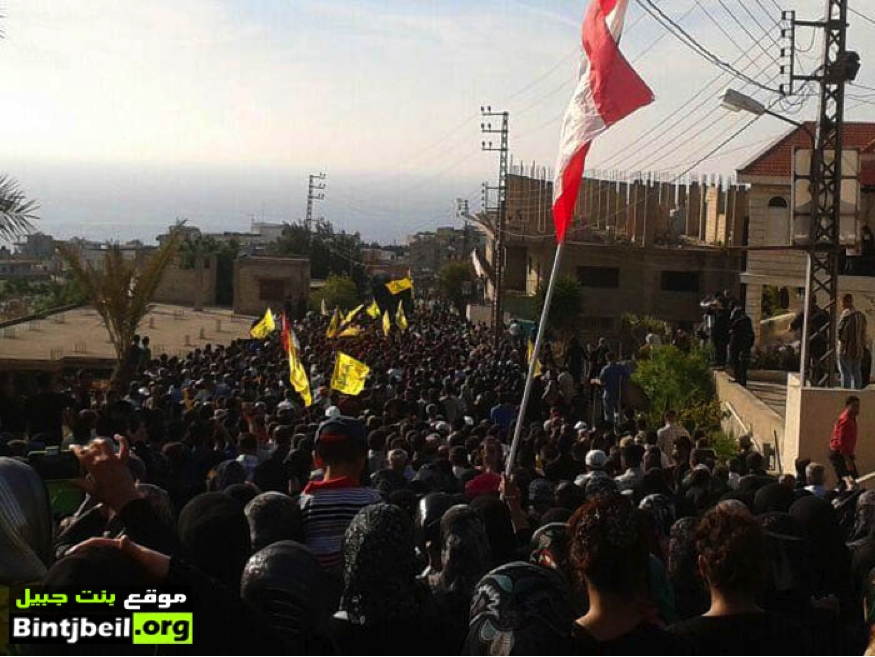

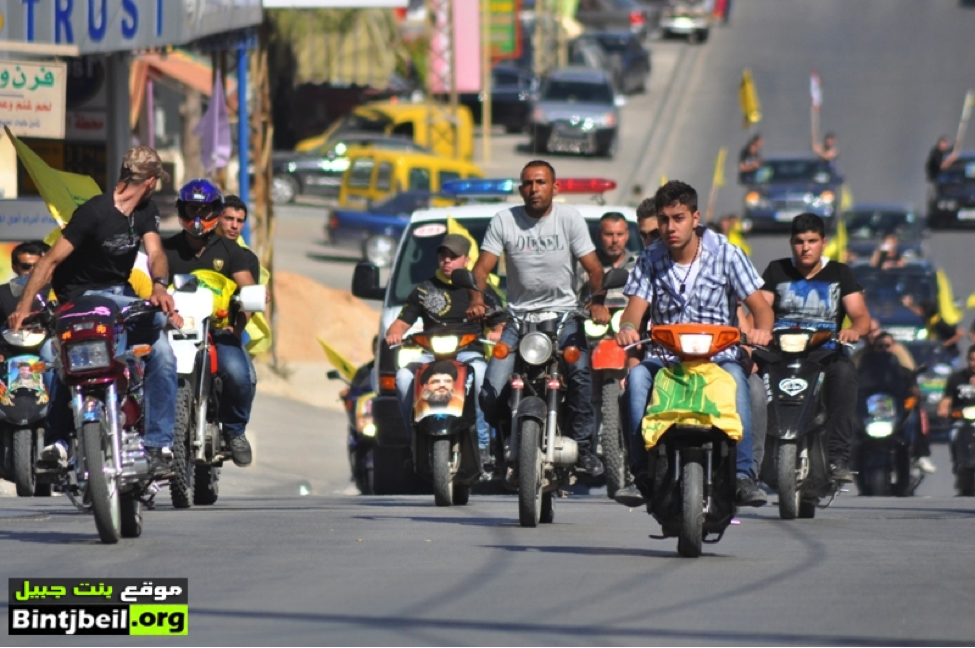

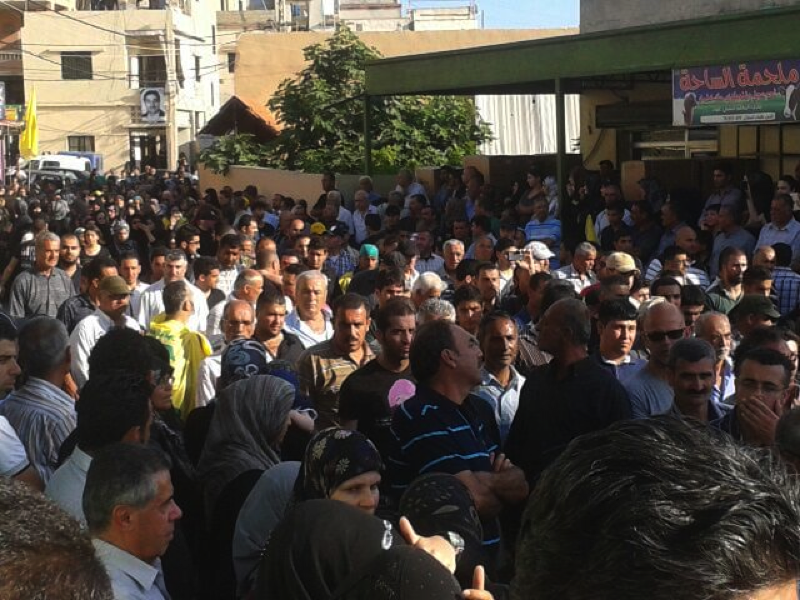
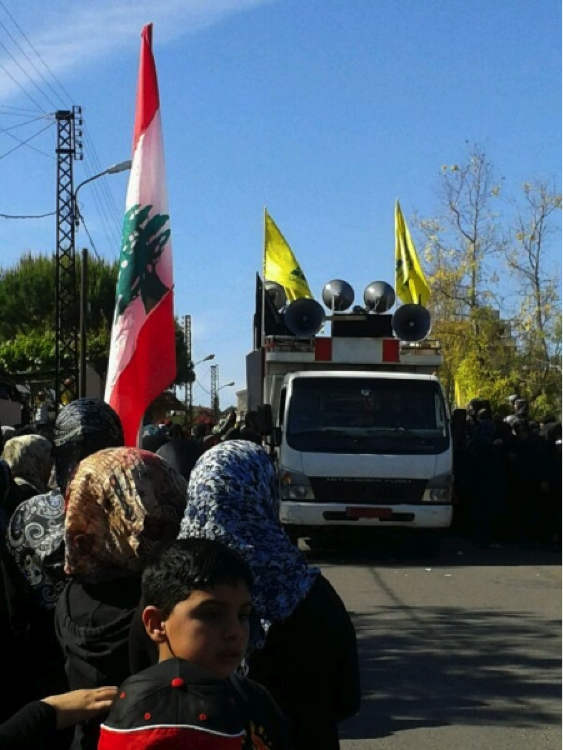
Figure 2: Trucks with mounted speakers are often used to shout Hizballah slogans during funerals.
Name: Al-Sayyid ‘Abd al-Talib Husayn al-Musawi
Death Announced: May 21, 2013. Funeral was held on May 21, 2013.
Notes: The funeral was held in the central Bekka Valley town of Nabi Chit. The day before, the town buried another fighter, Hassan Faysel Shaker (also spelled Shukor).[1]
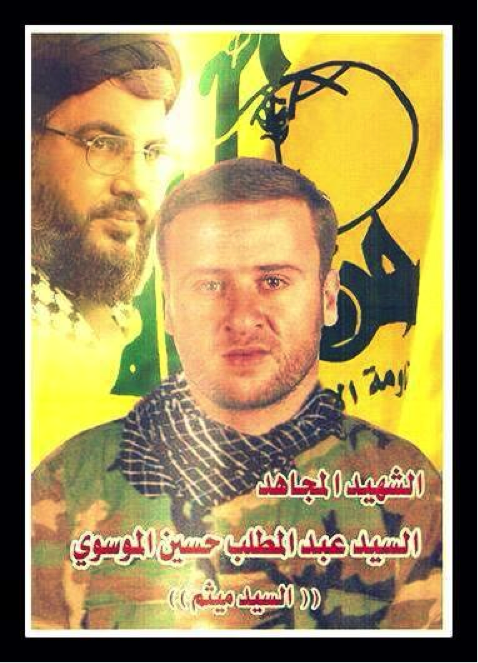

Name: Muhammed Jihad Yusuf
Death Announced: May 21, 2013. Funeral was held on May 23, 2013.
Notes: Yusuf was from the southern Lebanese city of Tyre.
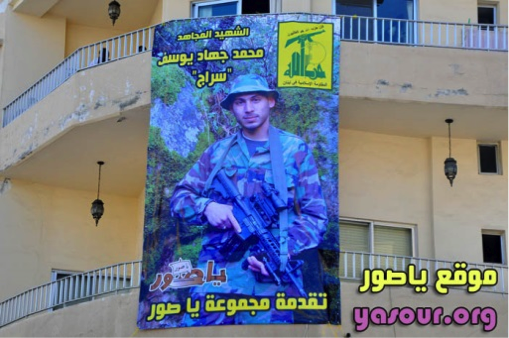
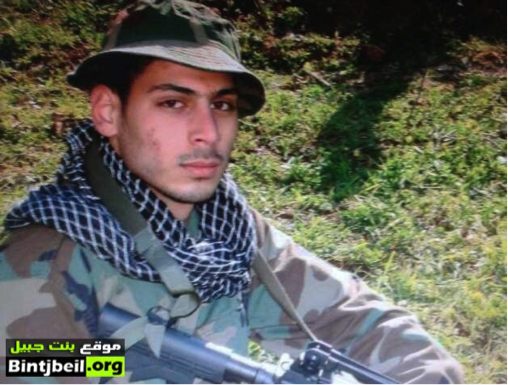
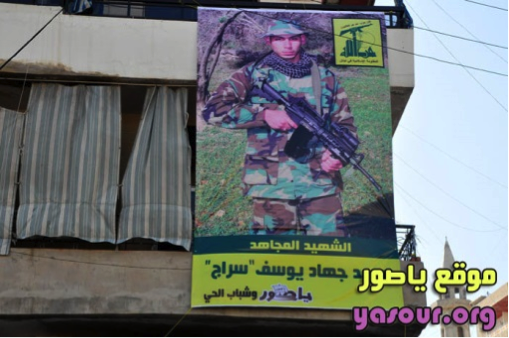
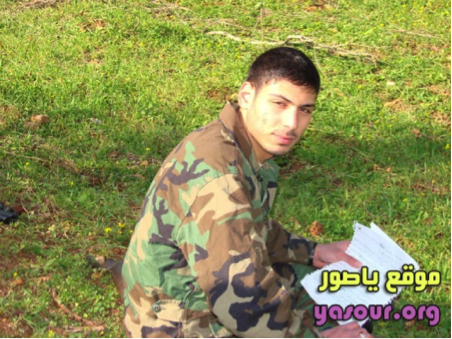

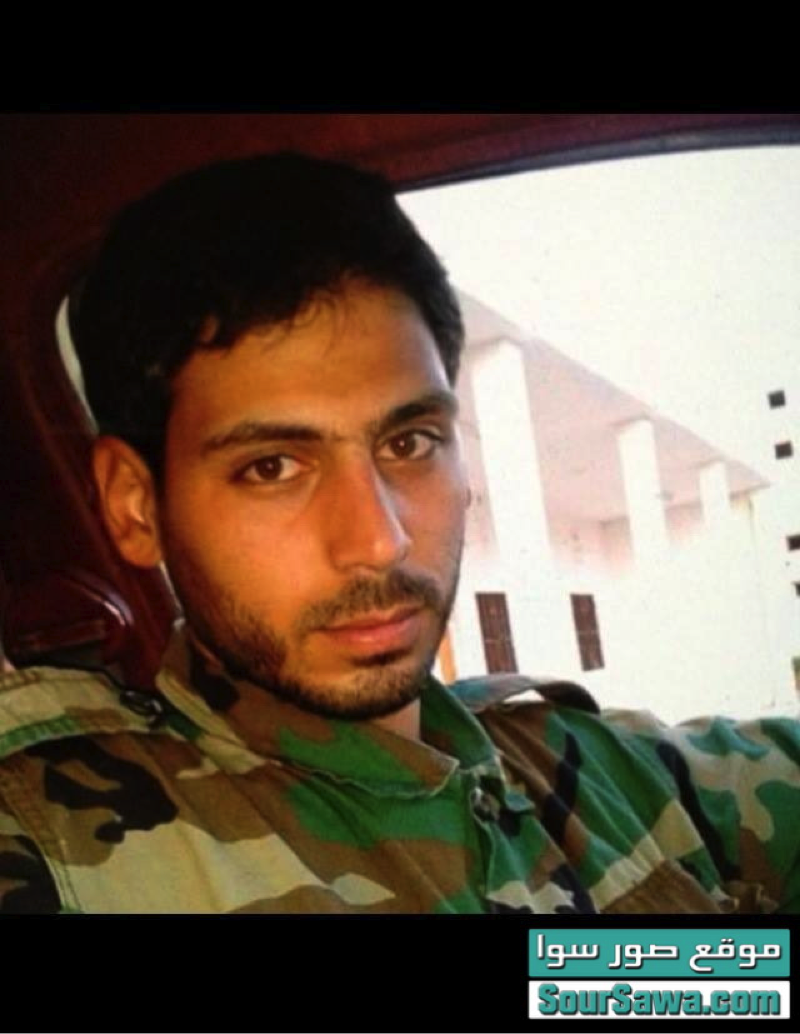
Name: Muhammed Ghassan Bedayr (A.K.A. Muhammed Husayn Ghassan)
Death Announced: May 21, 2013. Funeral was held on May 23, 2013. Funeral was also listed (with photos posted on two Hizballah run webpages) on May 24, 2013.

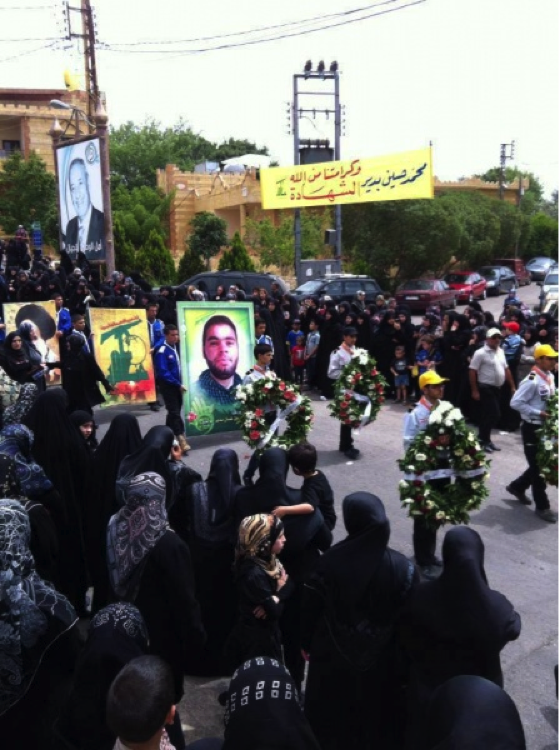

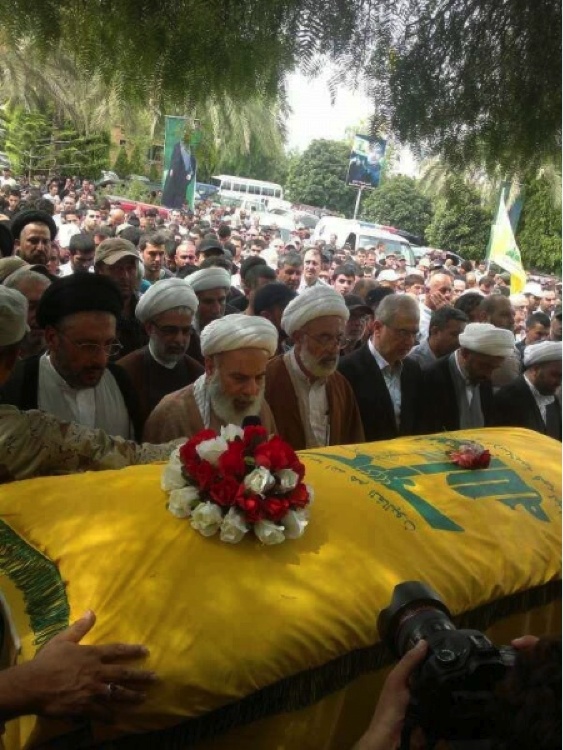
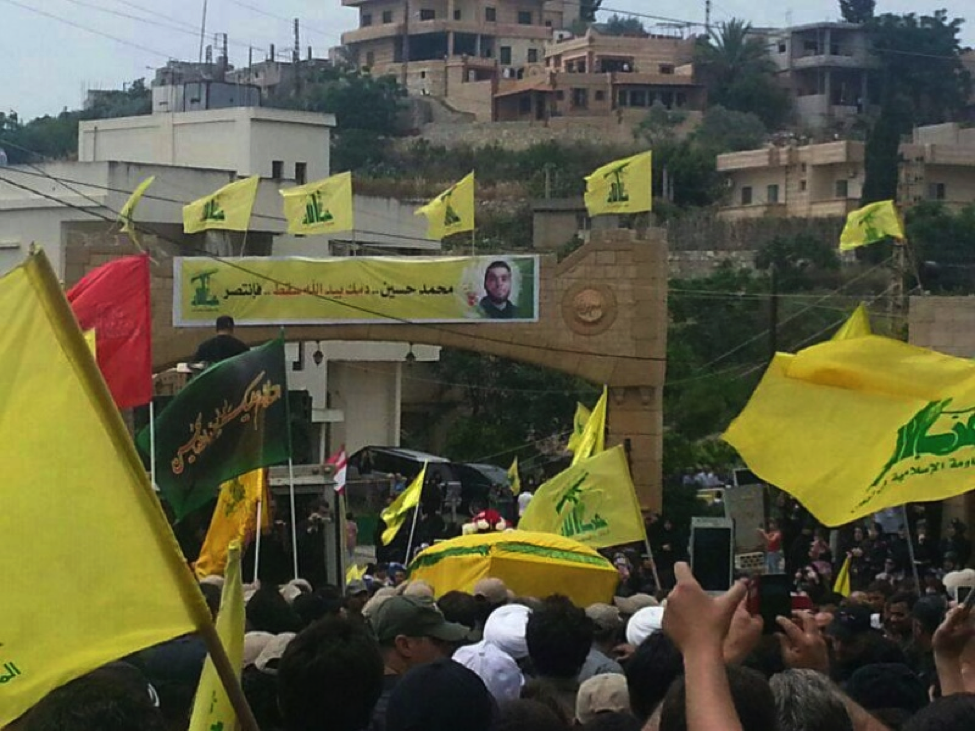
Name: Ali Ahmed Mazloum
Death Announced: May 21, 2013.
Notes: At the time of this writing, no other photographs were available. Mazloum’s death was announced via Facebook. It is important to see that the two religious clerics at the top of the photograph are Hizballah’s leader Sayyid Hassan Nasrallah (left) and Iran’s Supreme Leader, Grand Ayatollah Ali Khamenei.
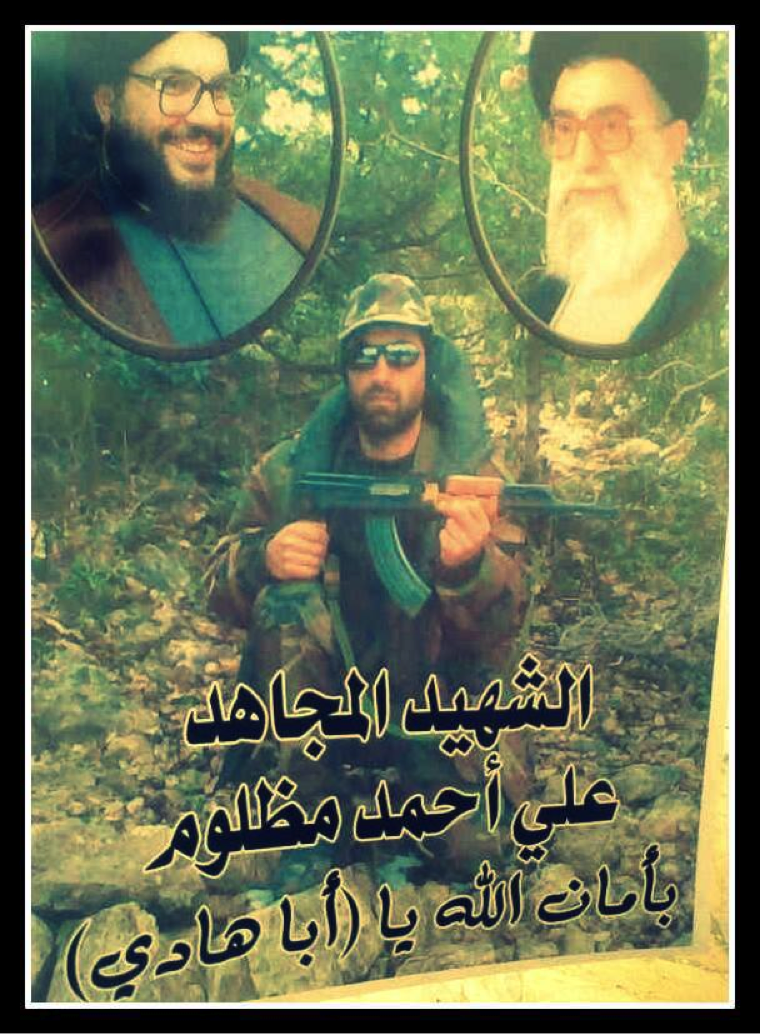
Name: Talib Habib Fadhl (A.K.A. Abu ‘Ali al-Hur)
Death Announced: May 24, 2013.
Notes: At the time of this writing, only one photo of Fadhl was released. In this photo Hizballah’s flag waves (left corner) and Damascus’s Sayda Zaynab Shrine shines in the sun (right corner).
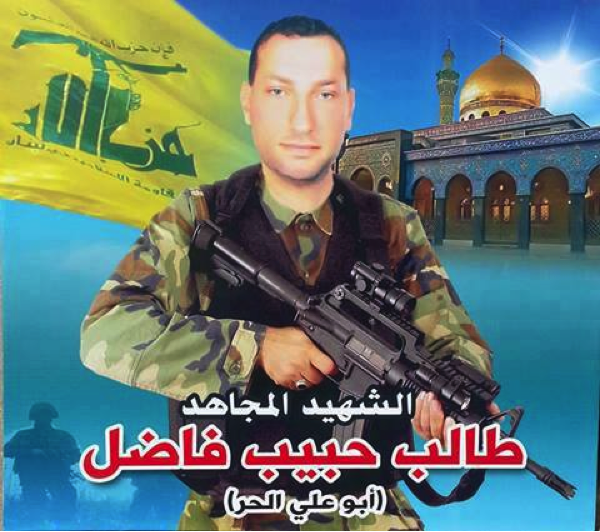
Name: Abbas Ahmed Halal (A.K.A. Abbas or Abu al-Fadhl)
Death Announced: May 24, 2013
Notes: On most Facebook and Hizballah-run webpages, Hilal is usually only referred to as, “Holy Warrior Martyr Abbas”. His middle and last names are not mentioned (except for one photo shown below). He was buried in Haboush, Lebanon.
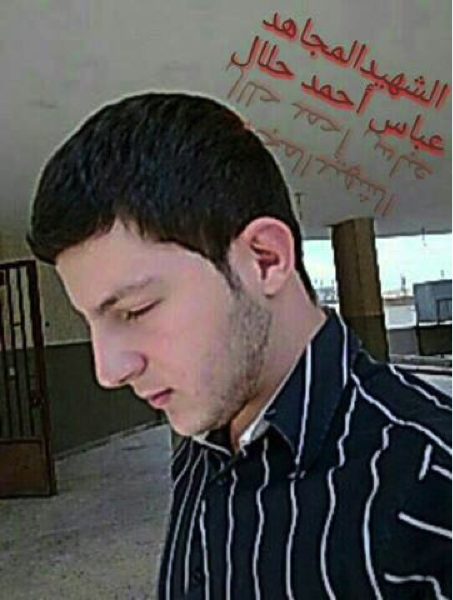
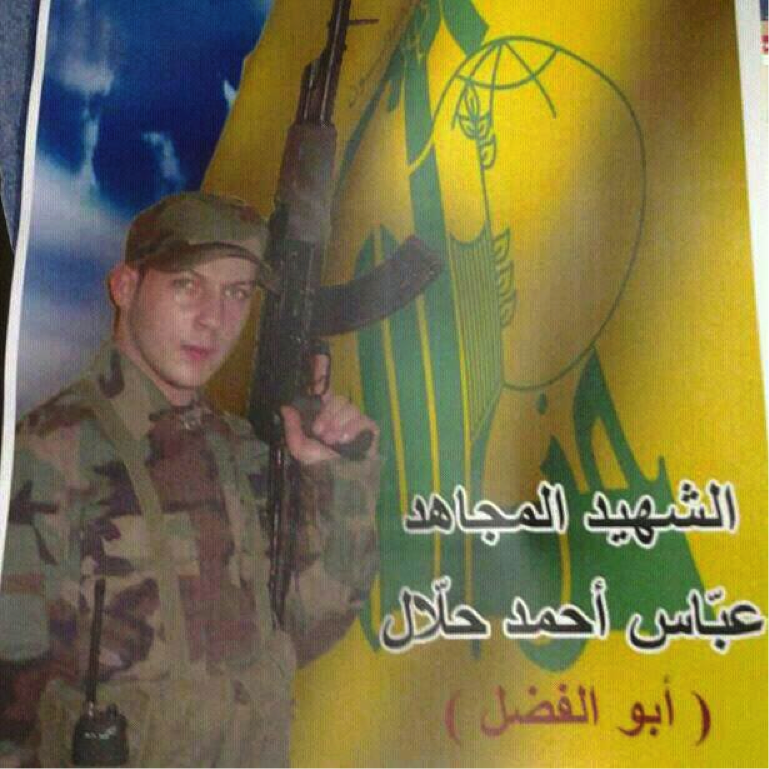

Name: Muhammed Diab ‘Ali Sayyid Ahmad (A.K.A. ‘Ali al-Ridha)
Death Announced: May 24, 2013
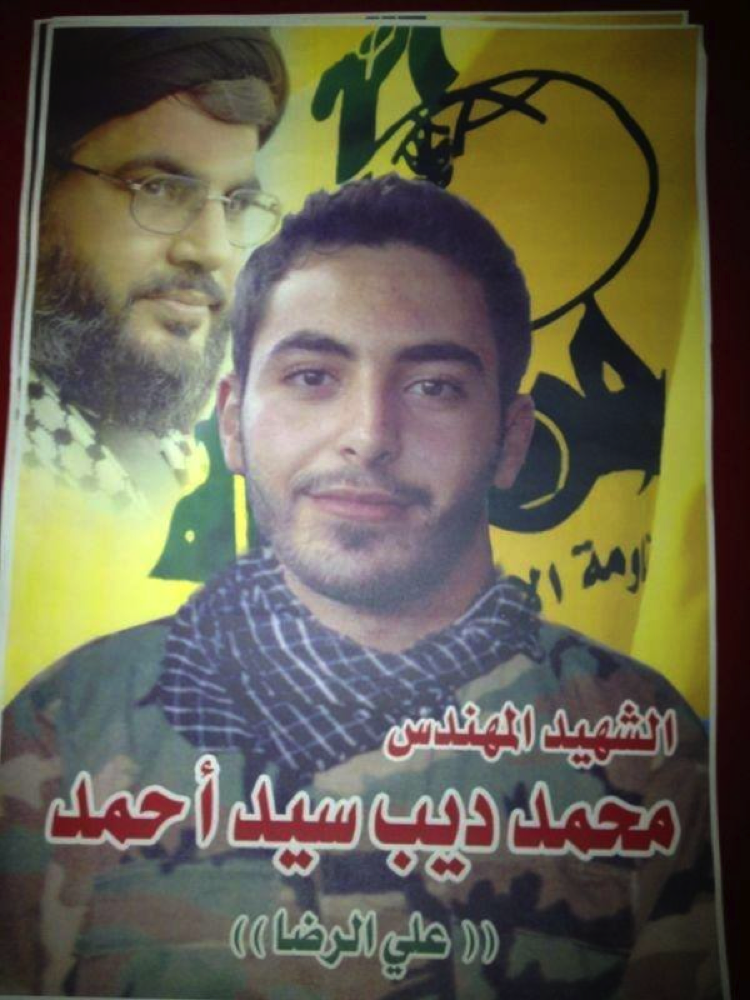
Name: Jusoor Muhammed Isma’il (A.K.A. Tareb)
Death Announced: May 24, 2013
Notes: In the photo it is possible to make out a tattoo of Abbas Ibn Ali (Abu Fadhl al-Abbas), a major figure in Shia Islam, who represents bravery, loyalty, and strength on the battlefield.
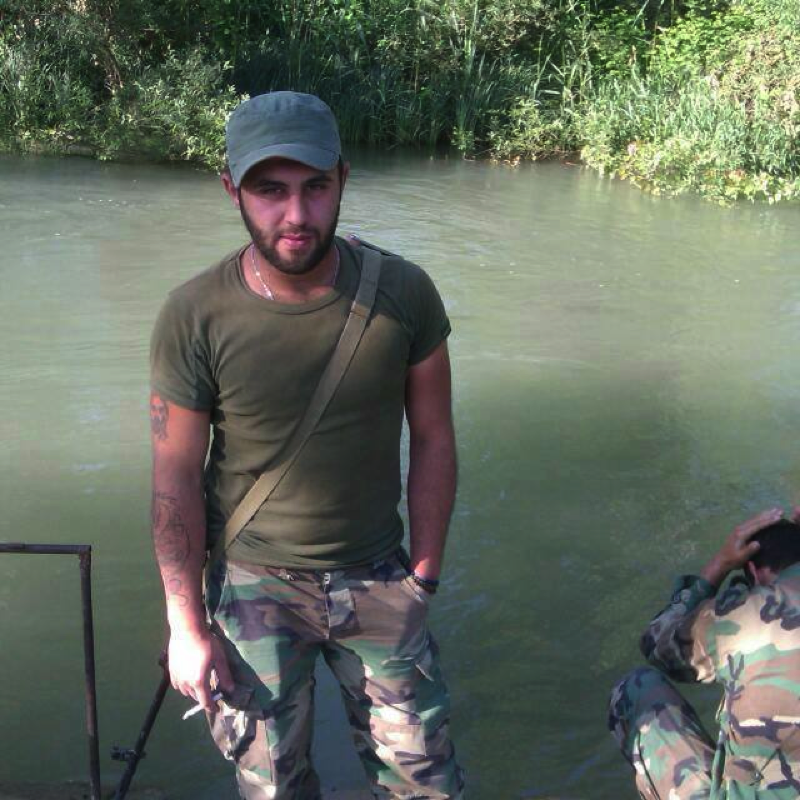
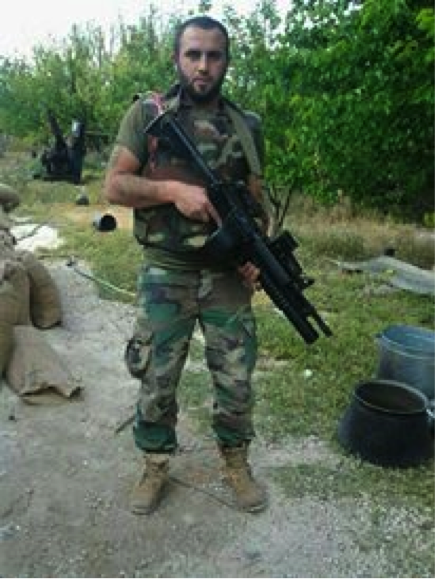
Name: ‘Ali Muhammed Sa’id ‘Aql (A.K.A. Abbas or ‘Ali Muhammed Aql)
Death Announced: May 24, 2013
Notes: One photograph of ‘Aql has been issued in the 24-hour period since his death was announced. His poster combines a photo of Hizballah leader, Sayyid Hassan Nasrallah and the gold dome of the Zaynab Shrine.
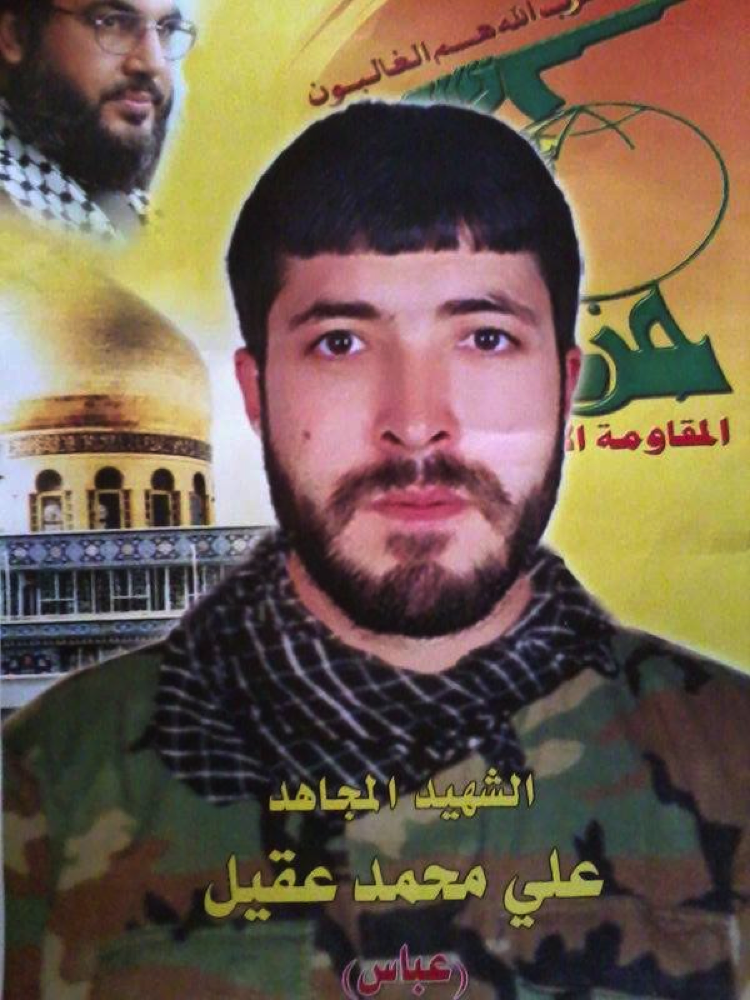
Name: Abbas ‘Ali Rashid Meqdad (A.K.A. Abu al-Fadhl)
Death Announced: May 24, 2013
Notes: Meqdad was claimed as a “Commander” on one Facebook page.
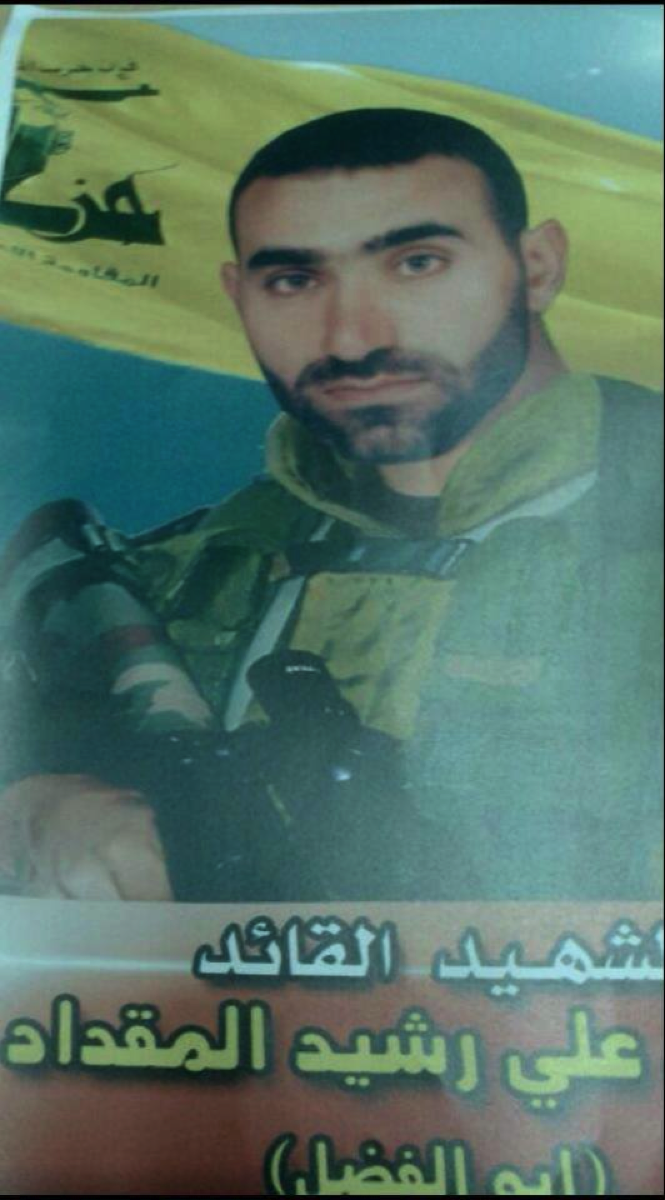
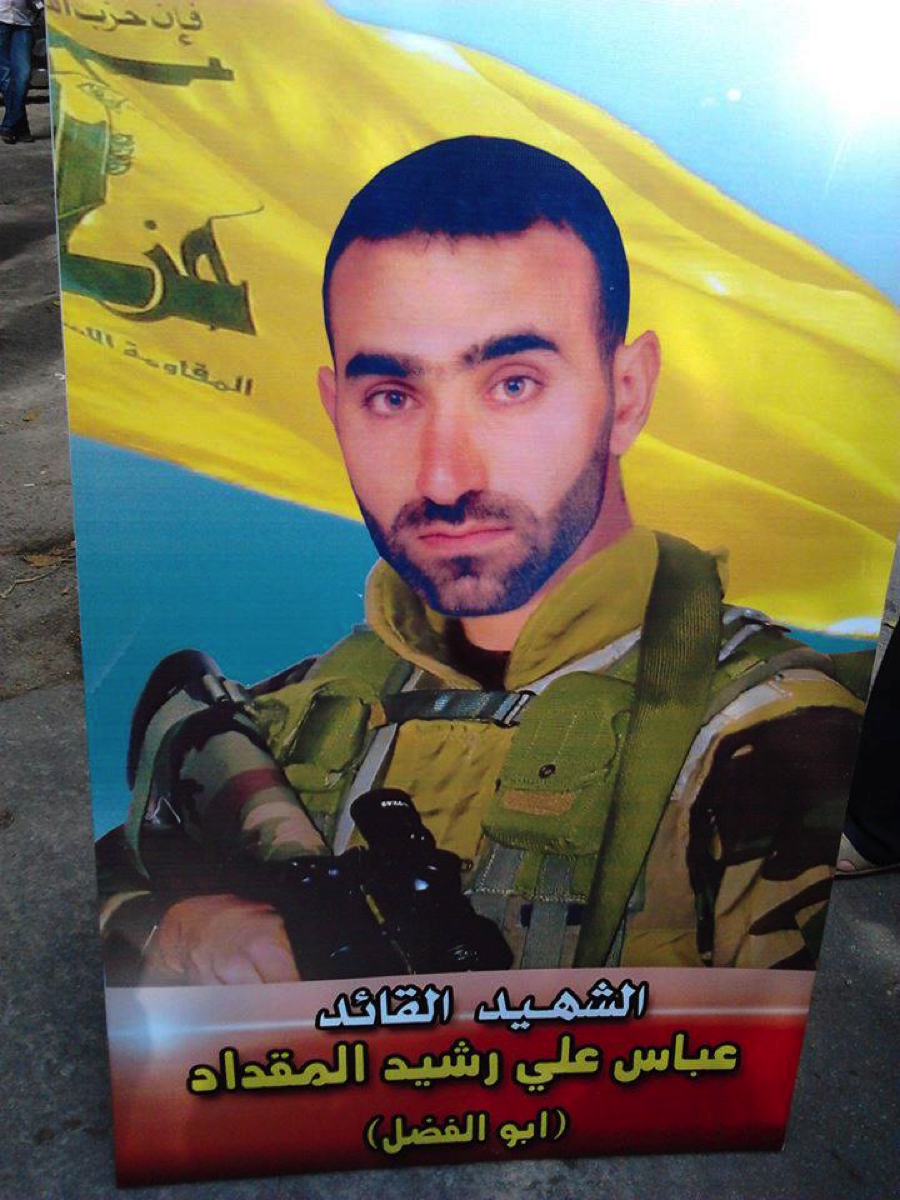
Name: Salah al-Sabagh
Death Announced: May 22, 2013
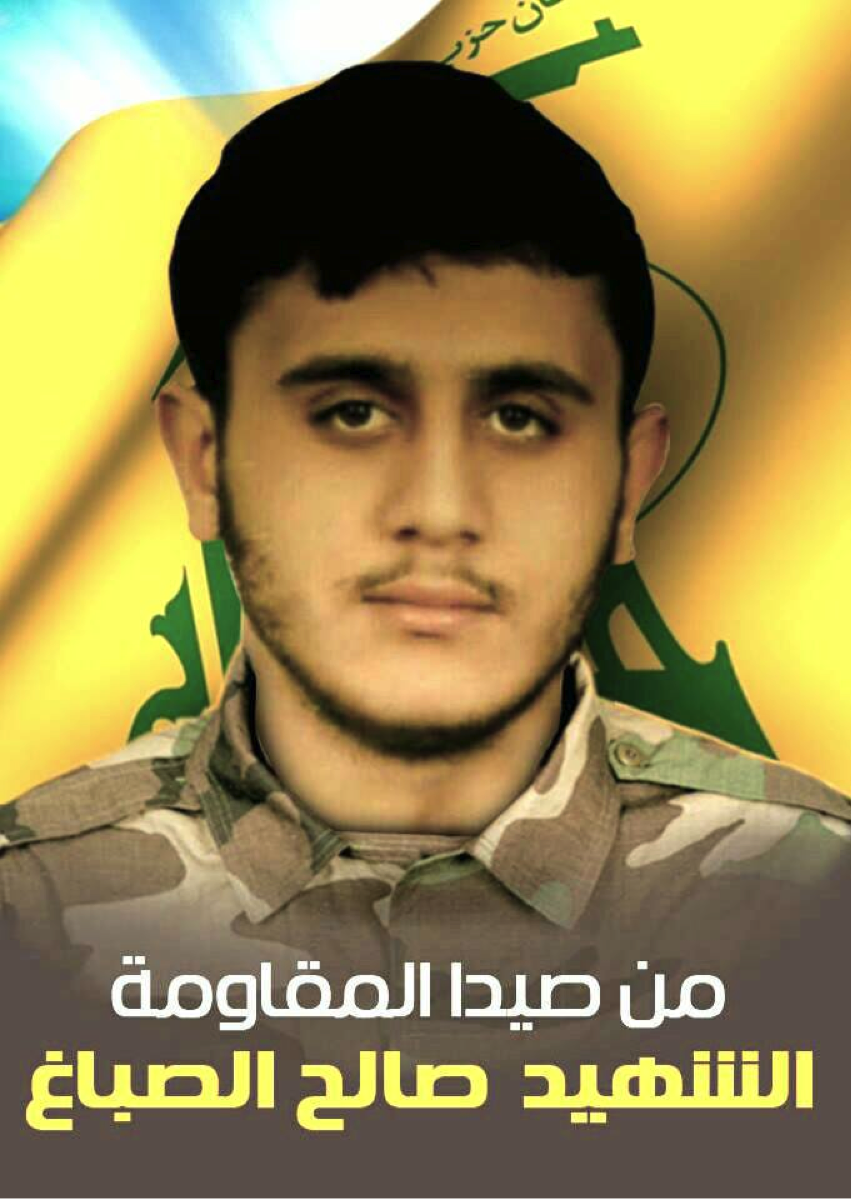
Name: Muhammed Hamadeh (A.K.A. Haj Bashar)
Death Announced: May 24, 2013
Notes: On Facebook, Hamadeh was claimed to be a Hizballah commander. His older age may indicate this claim as true. The announcement for Hamadeh was only found on 2 pro-Hizballah Facebook pages.
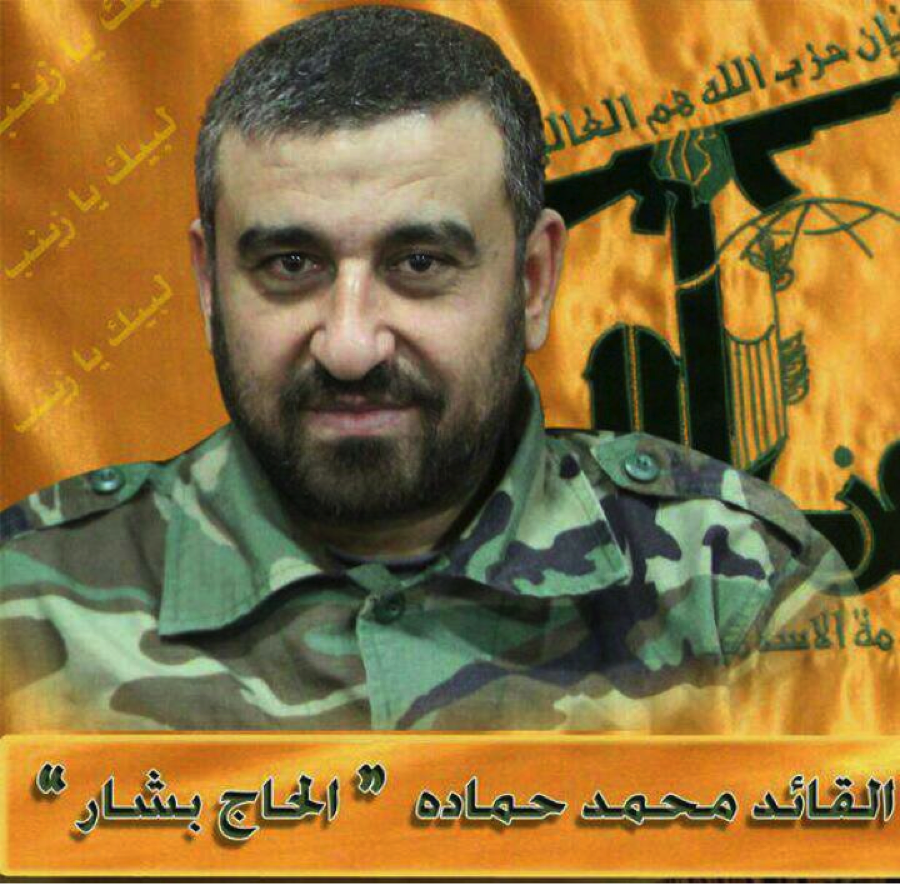
Name: Isma’il ‘Ali Za’ytar (A.K.A. Abu Mahdi Nasrallah)
Death Announced: May 25, 2013
Notes: Youkal.net claims Za’ytar was killed in Qusayr.

Name: Husayn Abdallah Tashuni
Death Announced: May 25, 2013
Notes: Youkal.net claimed Tashuni was killed in Qusayr.
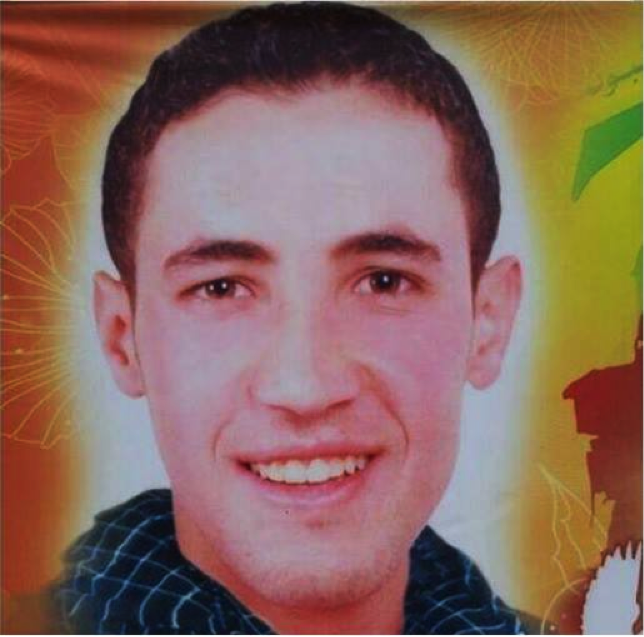
Name: Muhammed Husayn Salami (A.K.A. Bura al-Zuhra)
Death Announced: May 23, 2013. Burial took place on May 24, 2013.
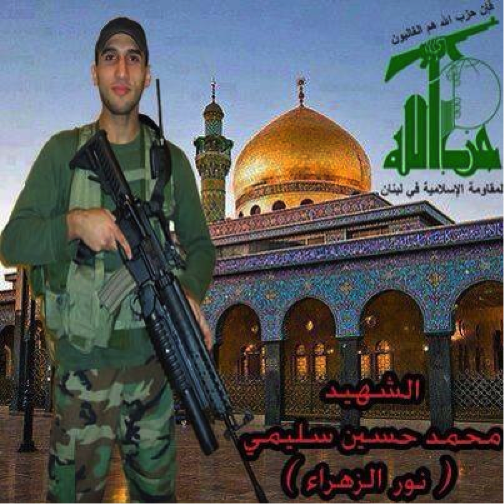
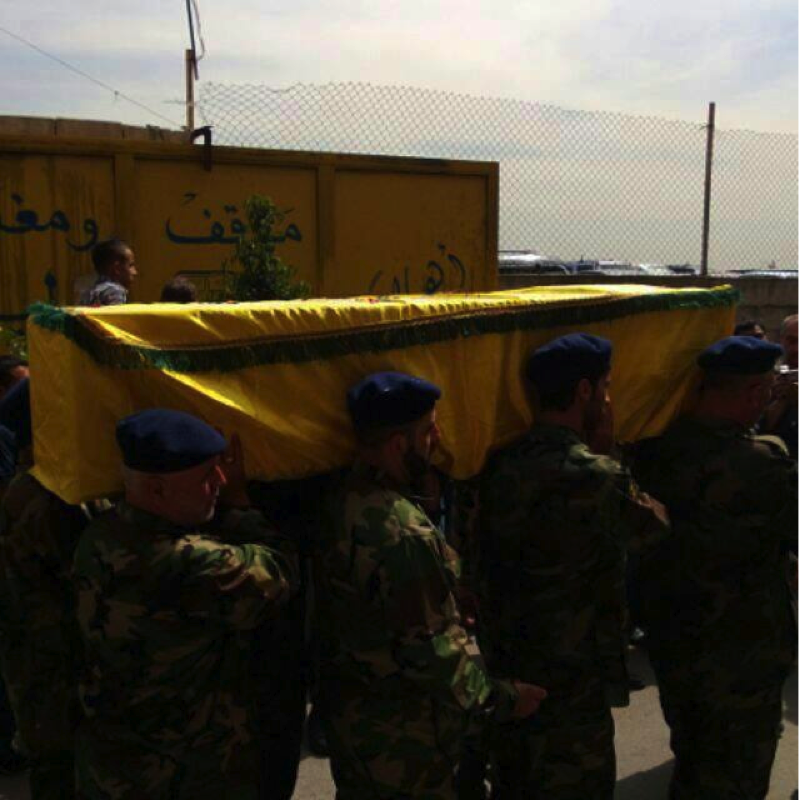
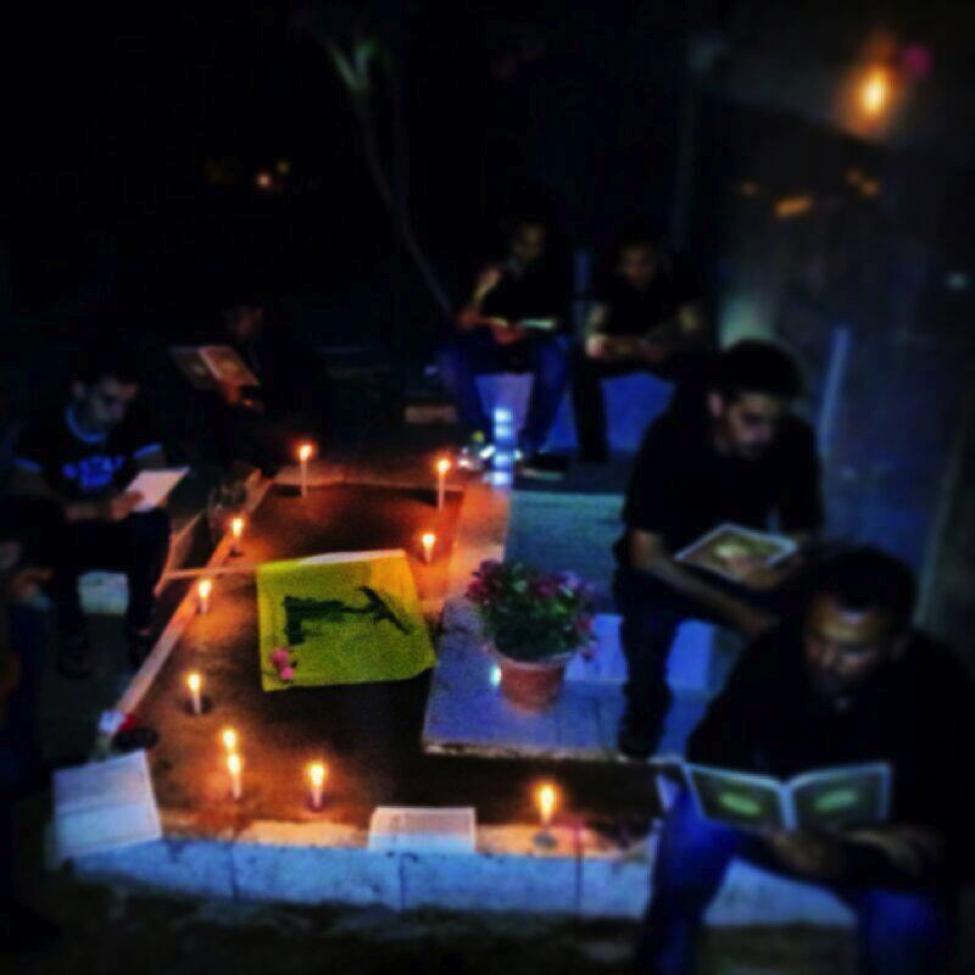 [1] See also: Anne Barnard, “Hezbollah’s Role in Syria War Shakes the Lebanese”, The New York Times, May 20, 2013 https://www.nytimes.com/2013/05/21/world/middleeast/syria-developments.html.
[1] See also: Anne Barnard, “Hezbollah’s Role in Syria War Shakes the Lebanese”, The New York Times, May 20, 2013 https://www.nytimes.com/2013/05/21/world/middleeast/syria-developments.html.

